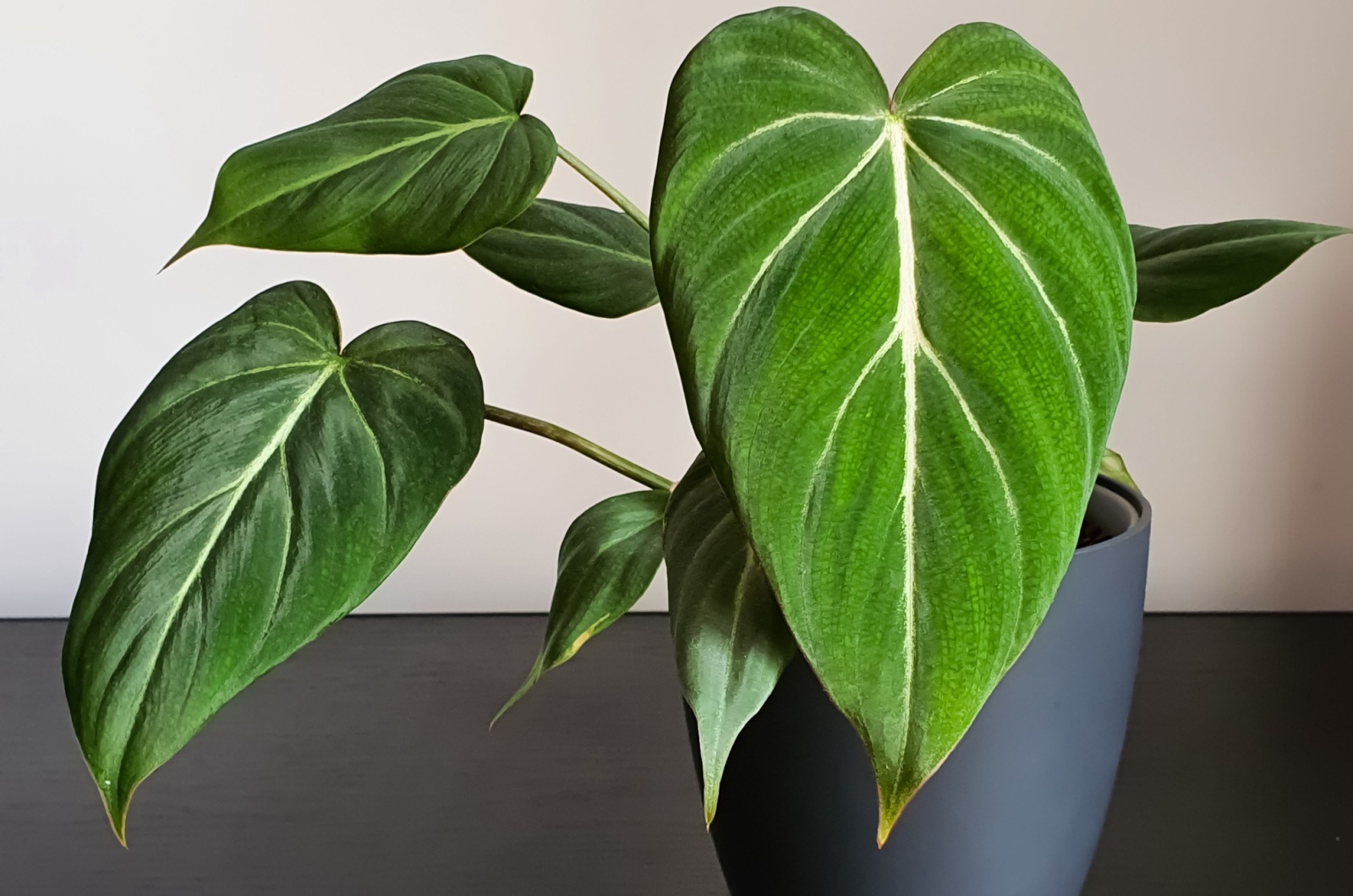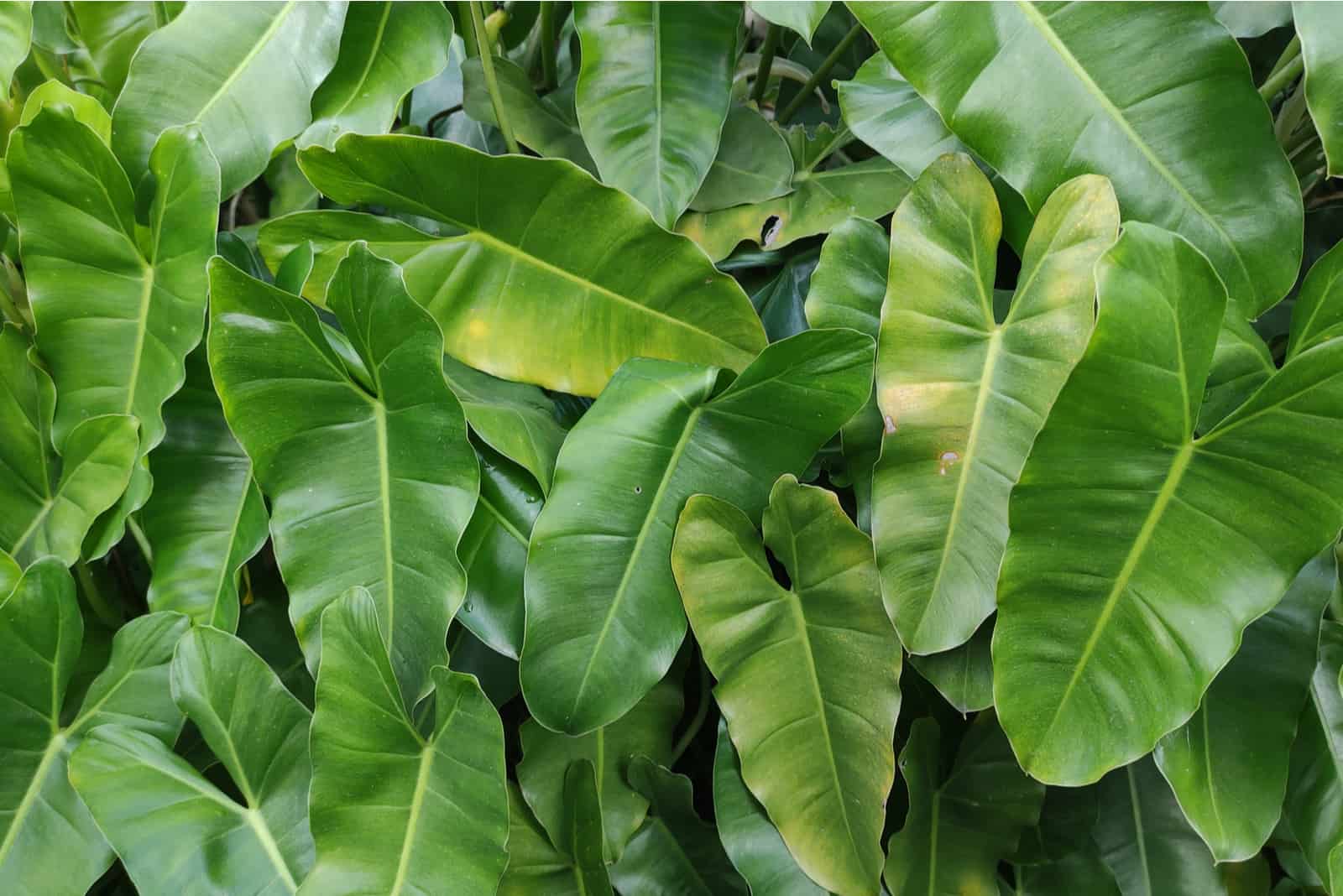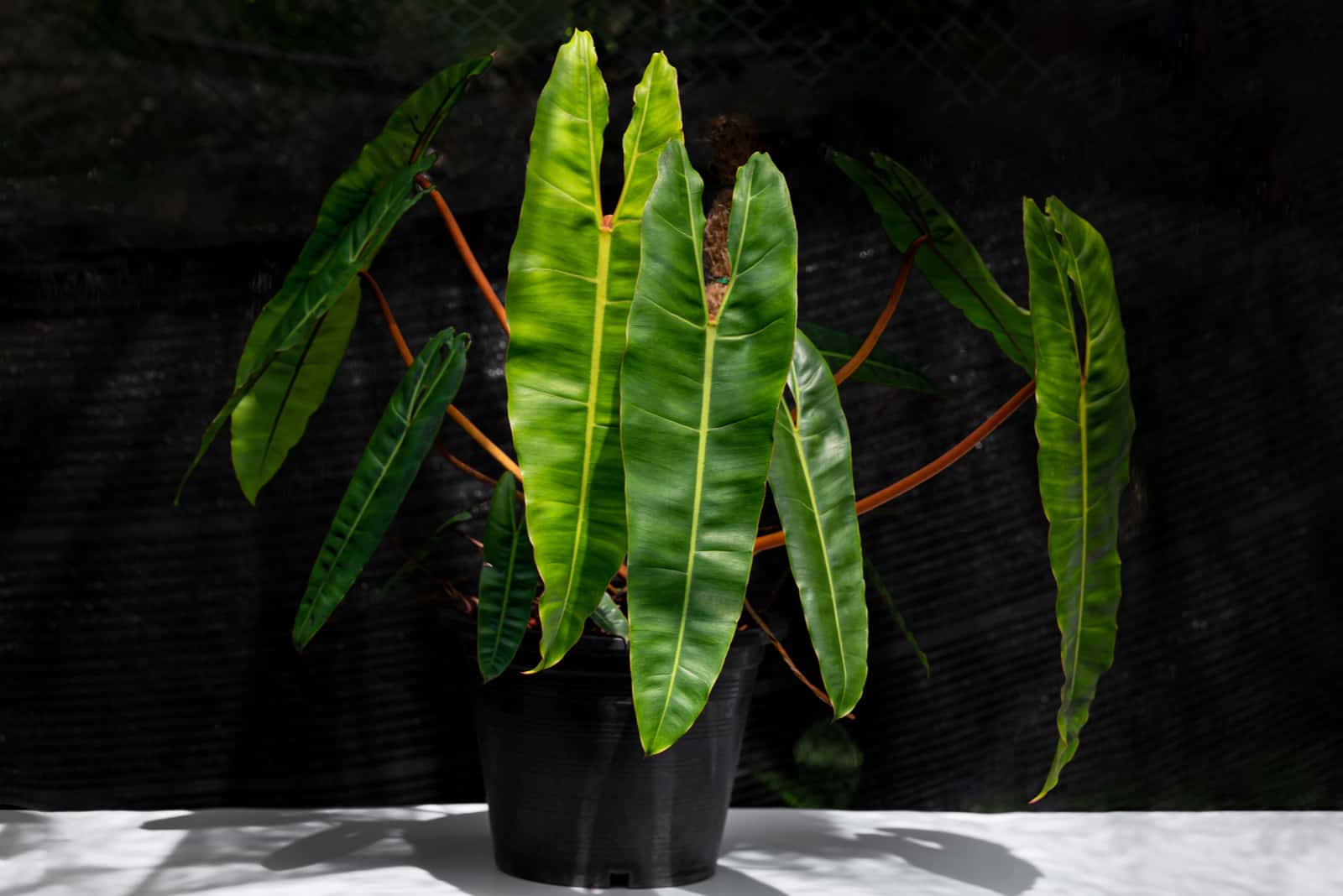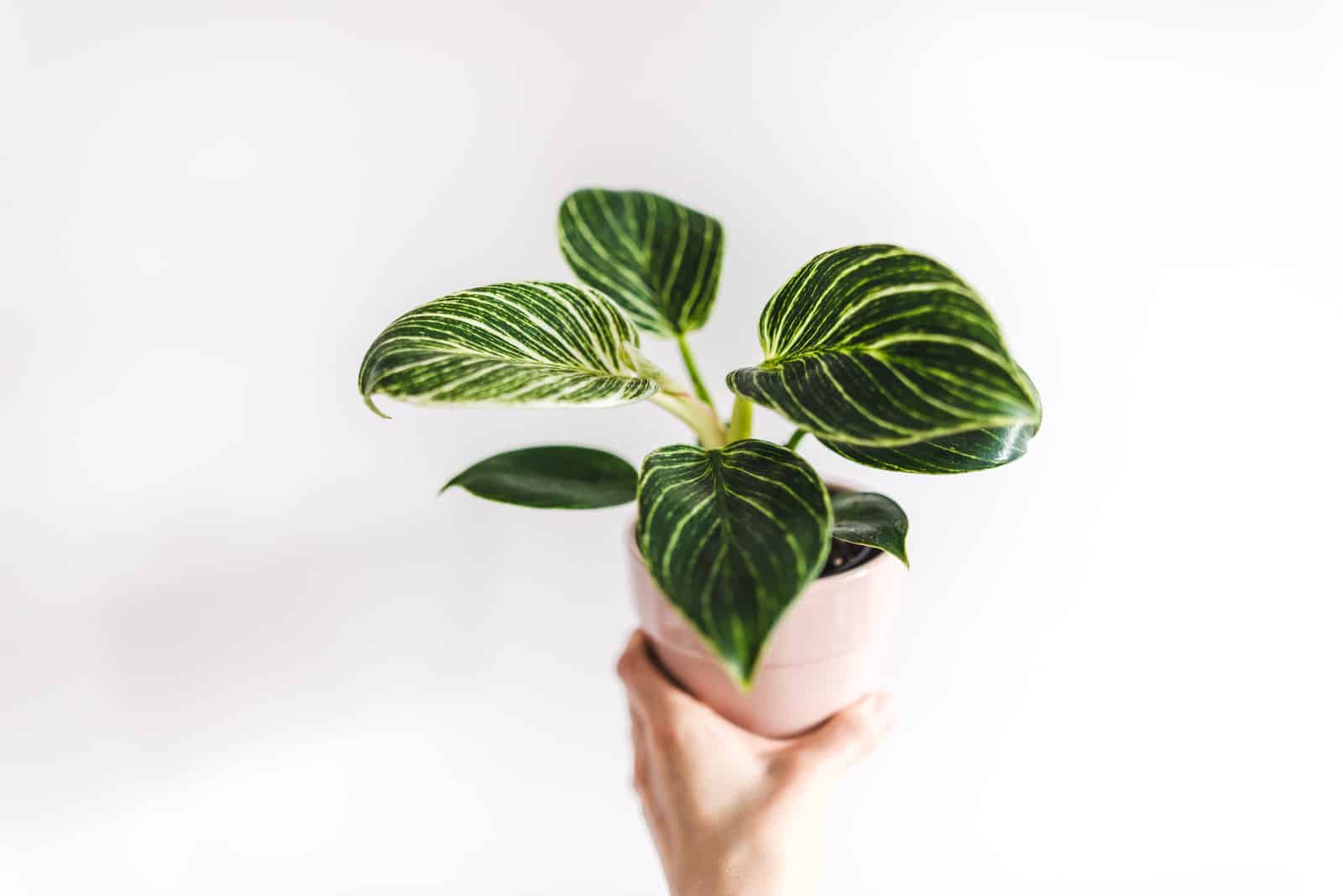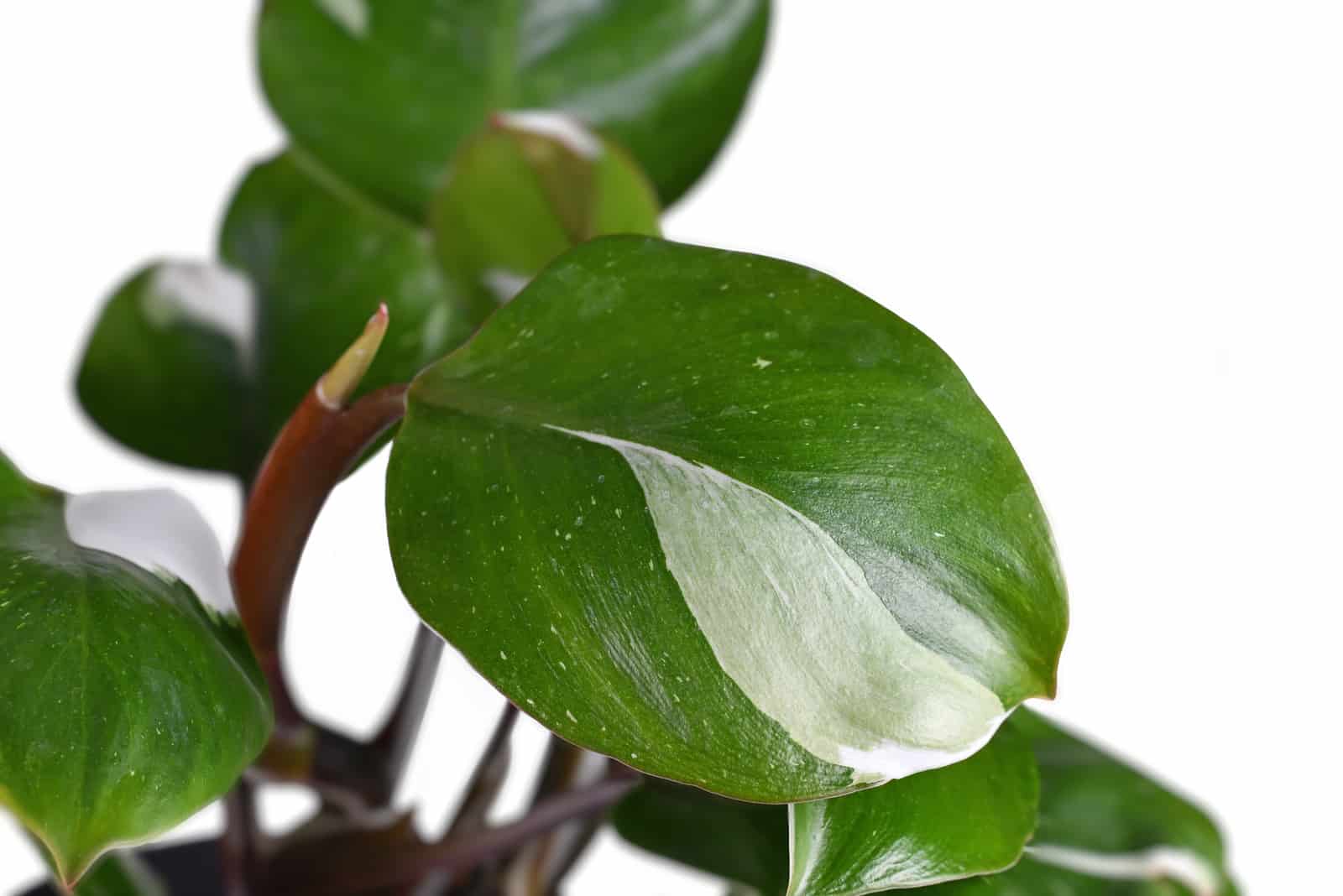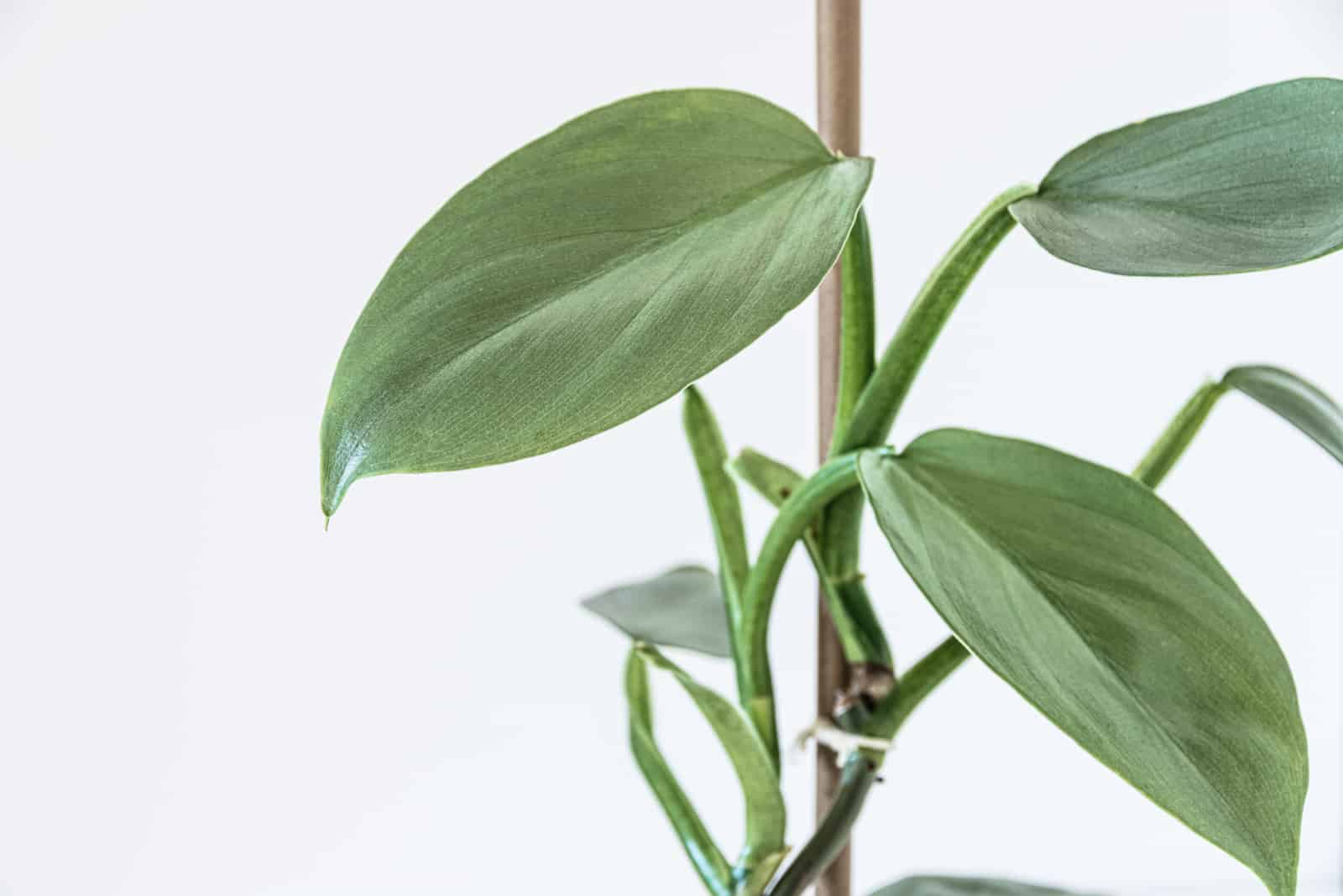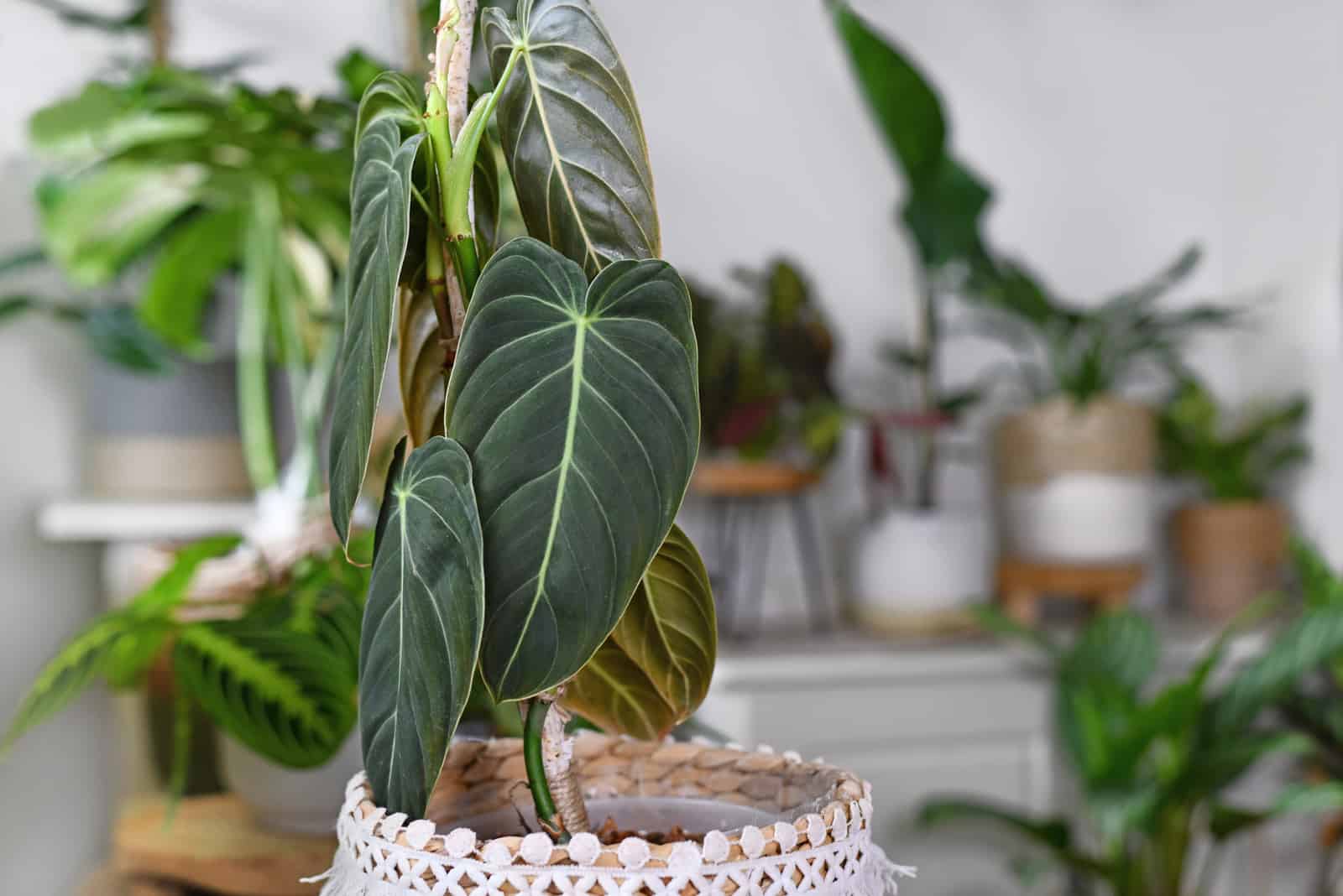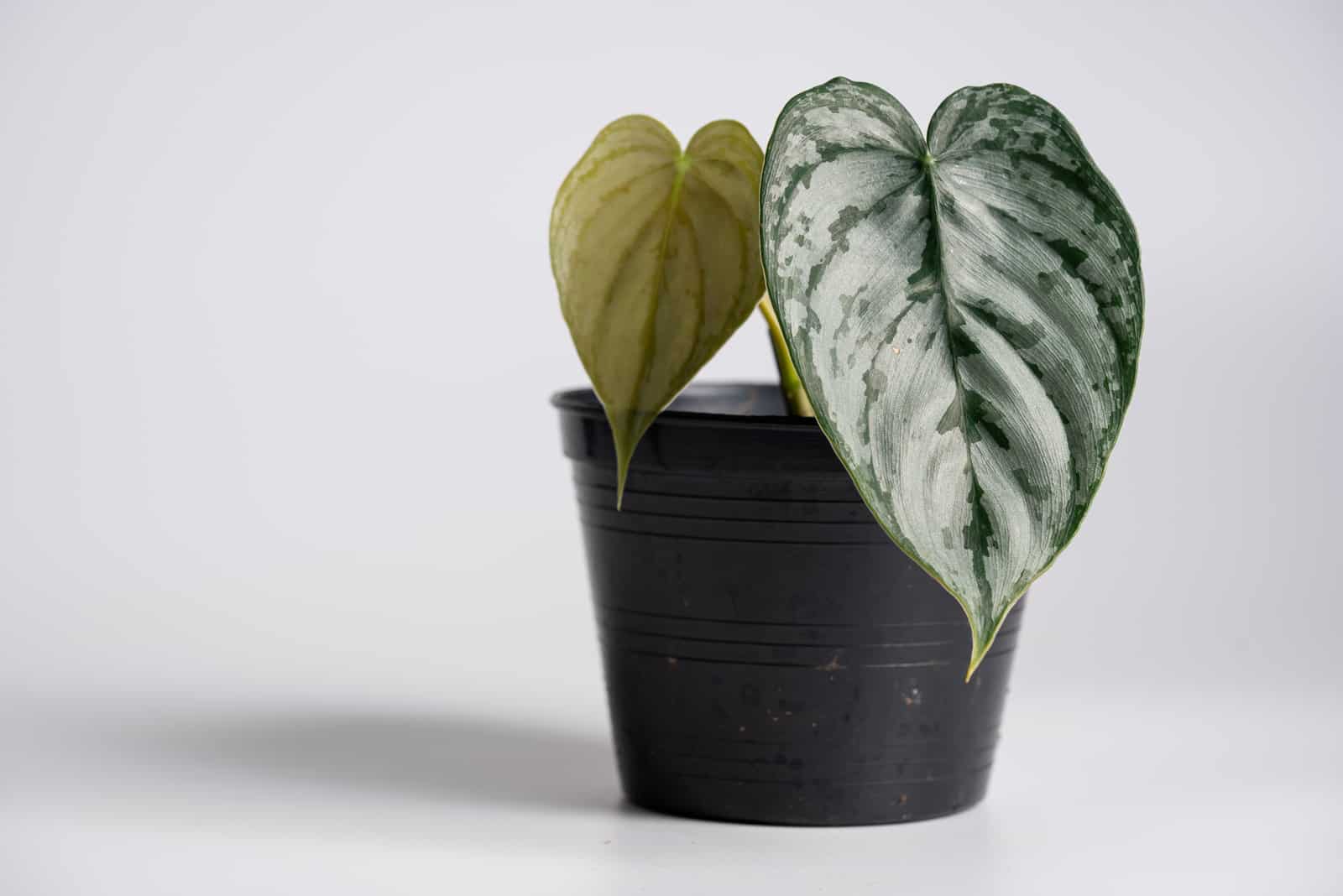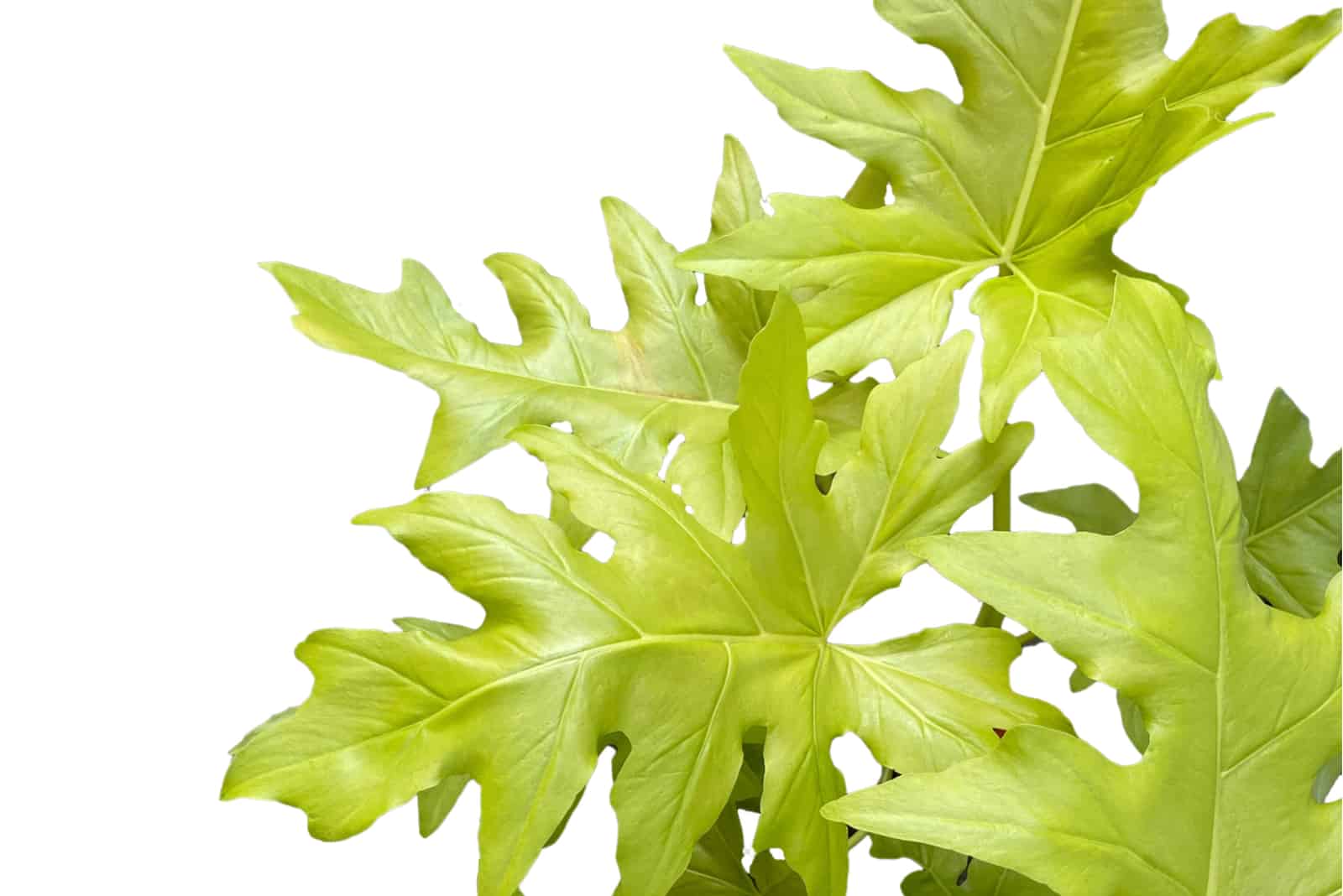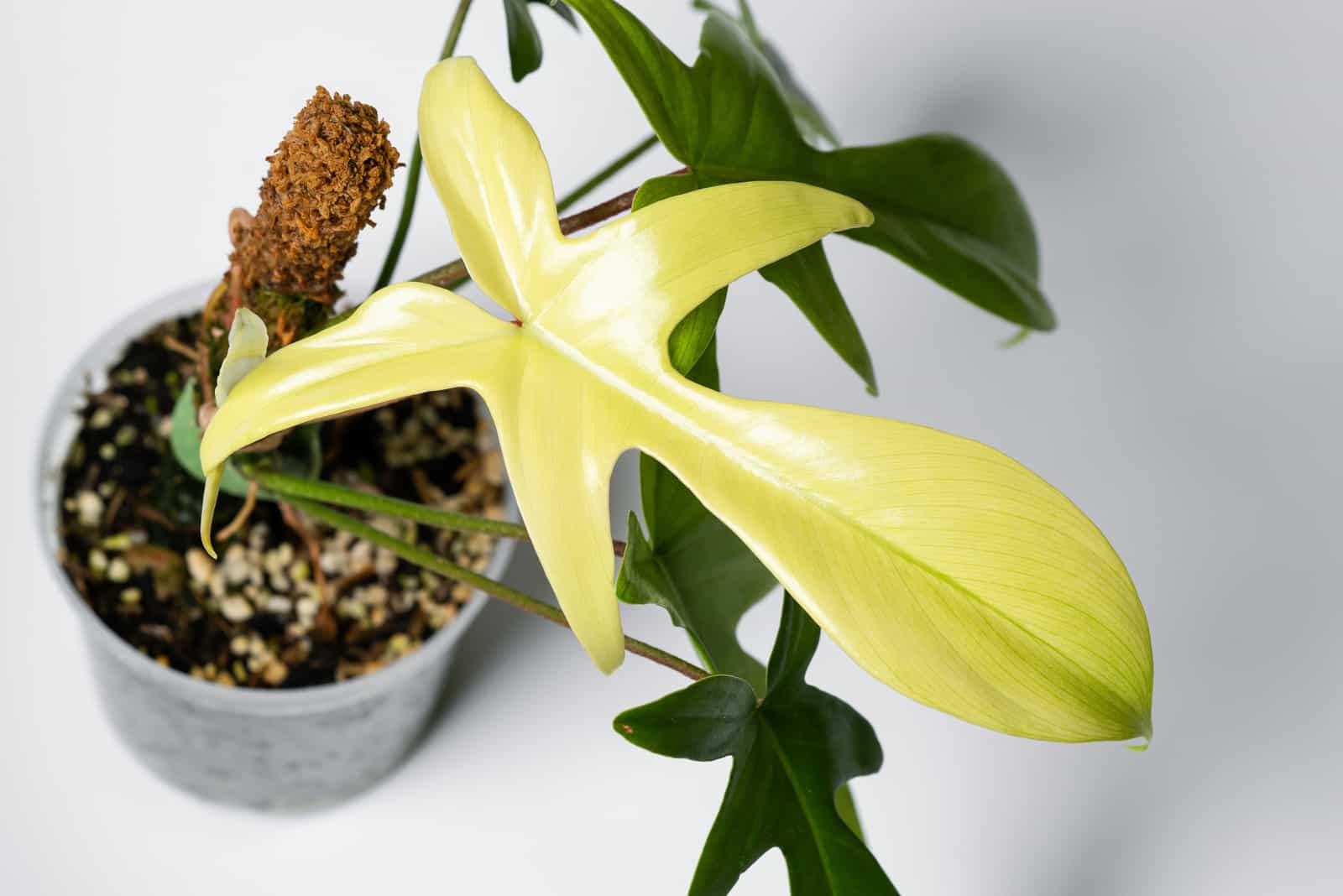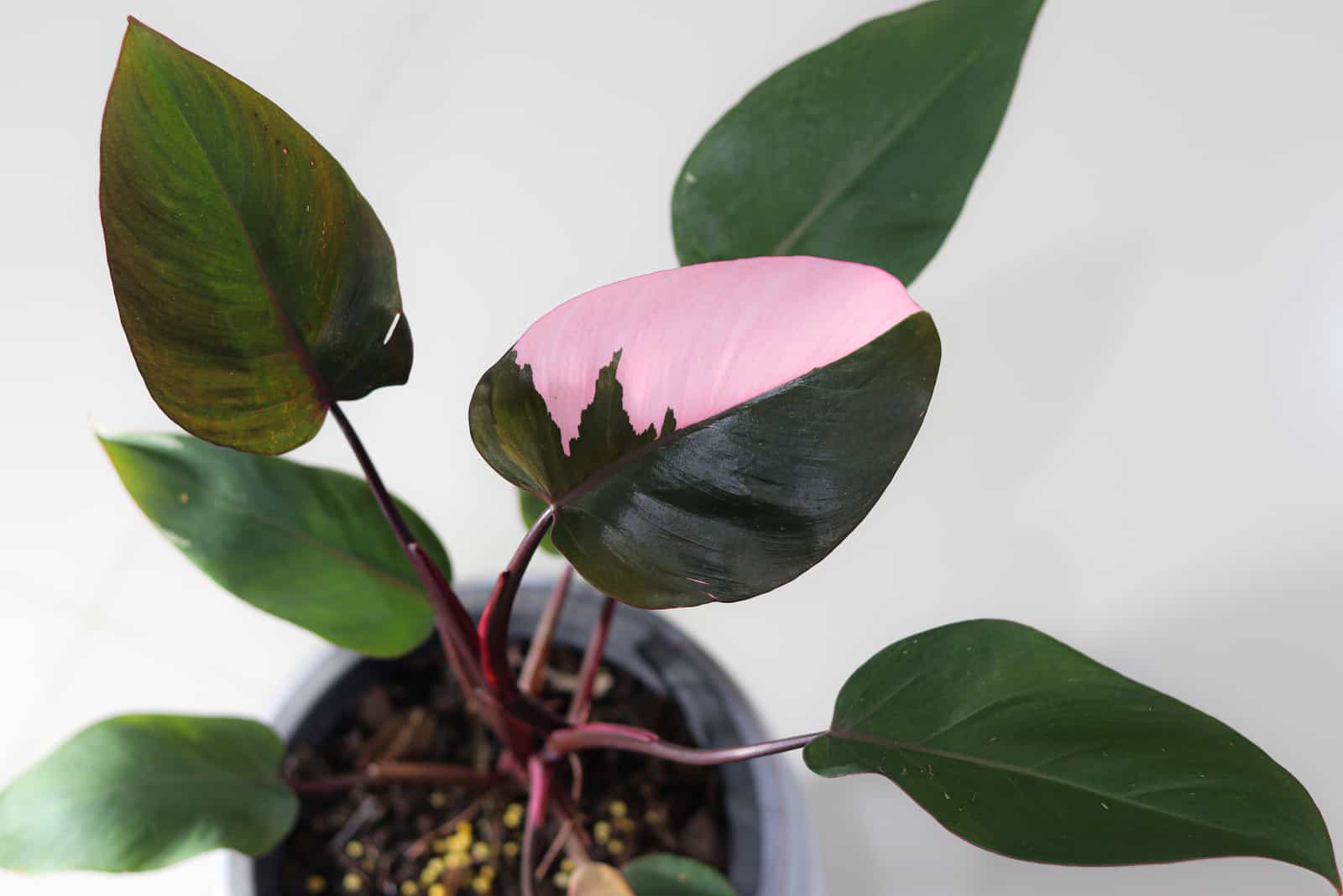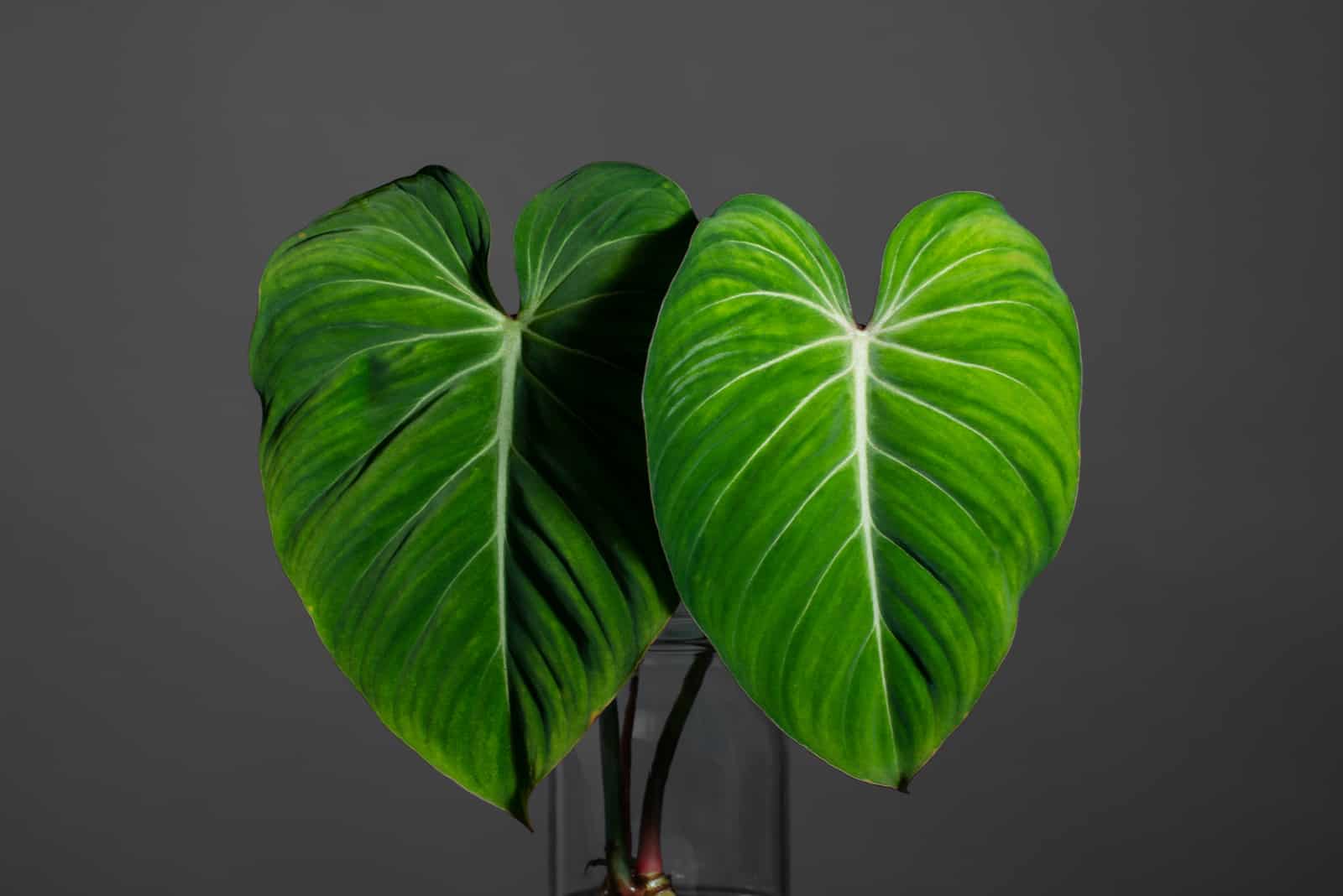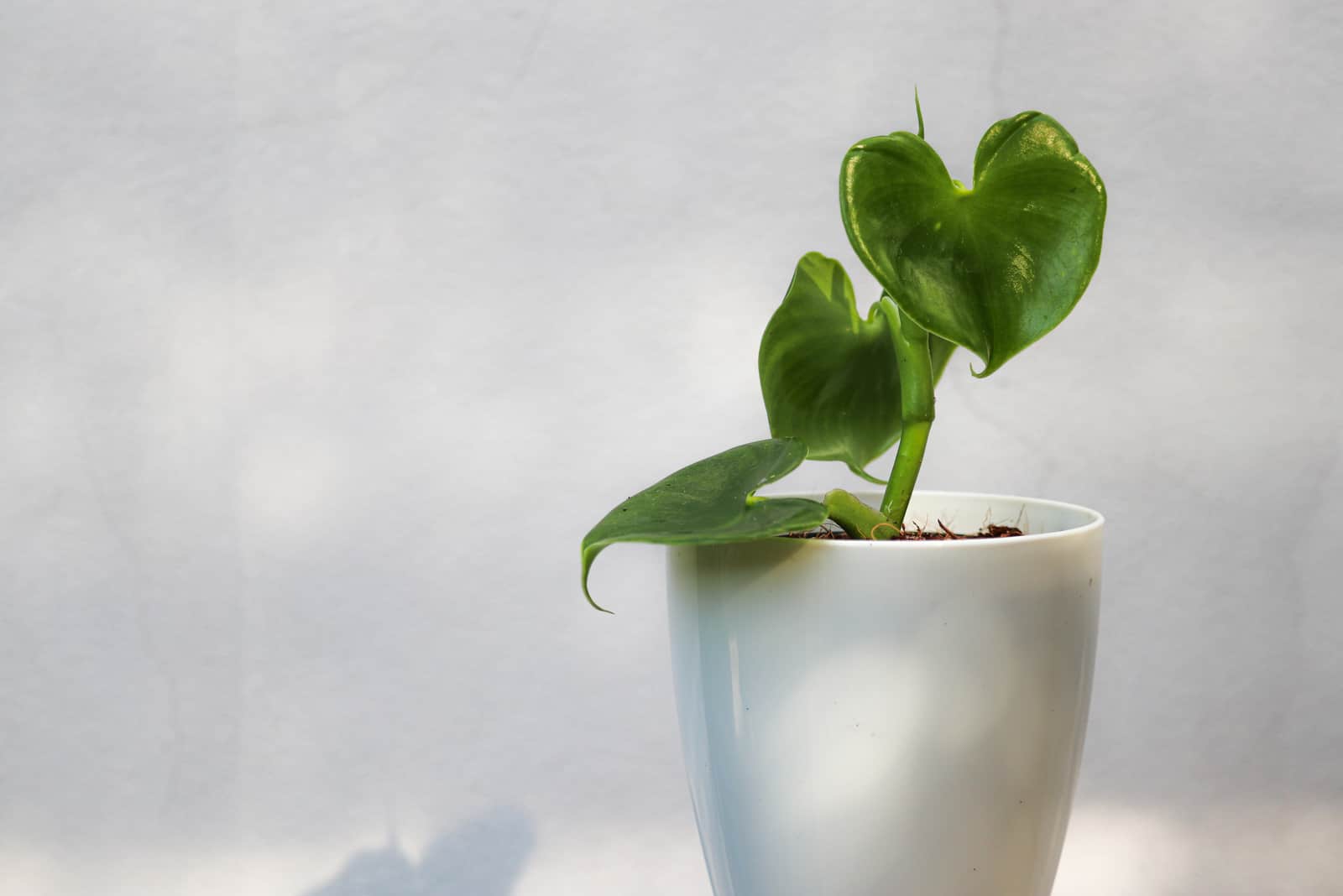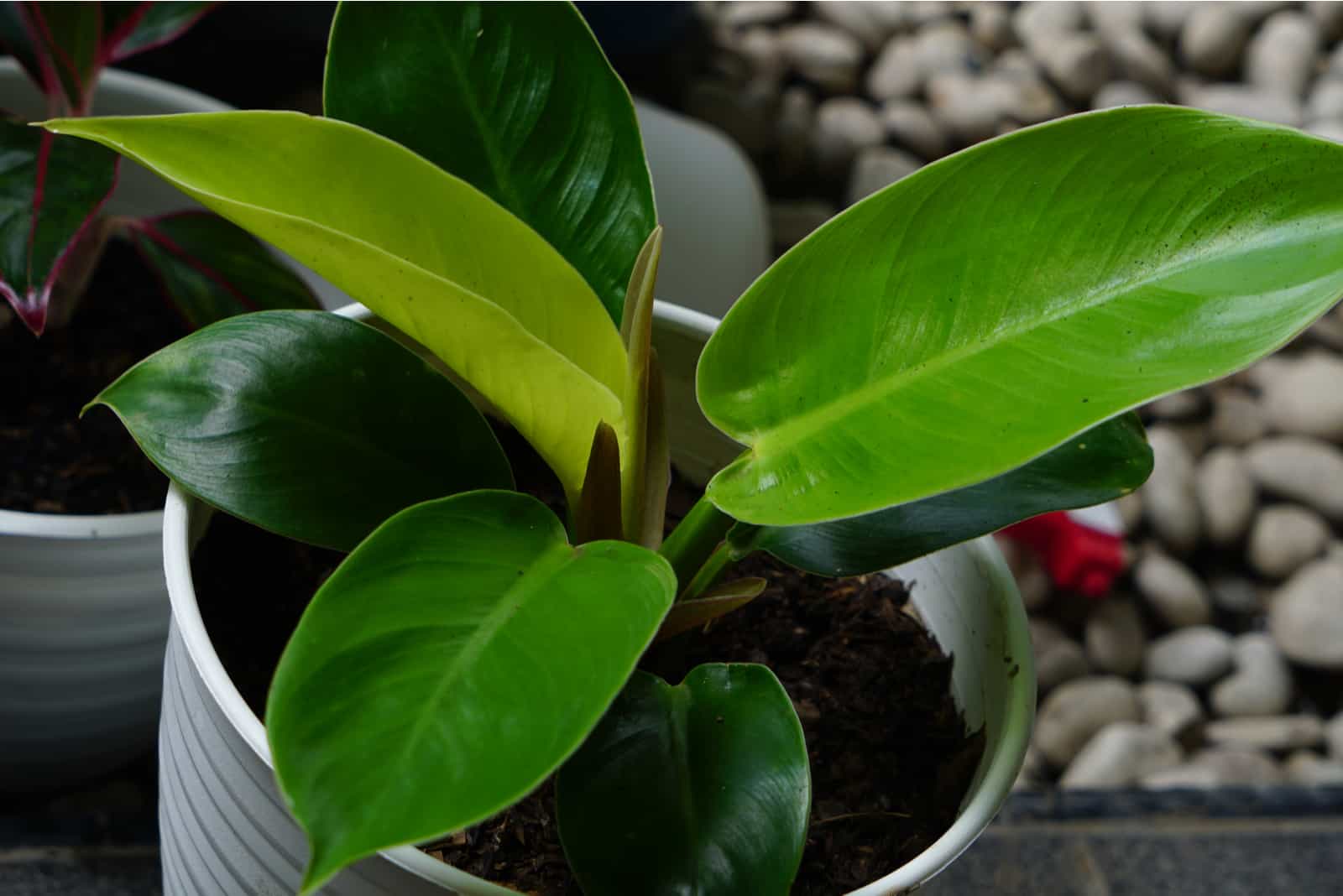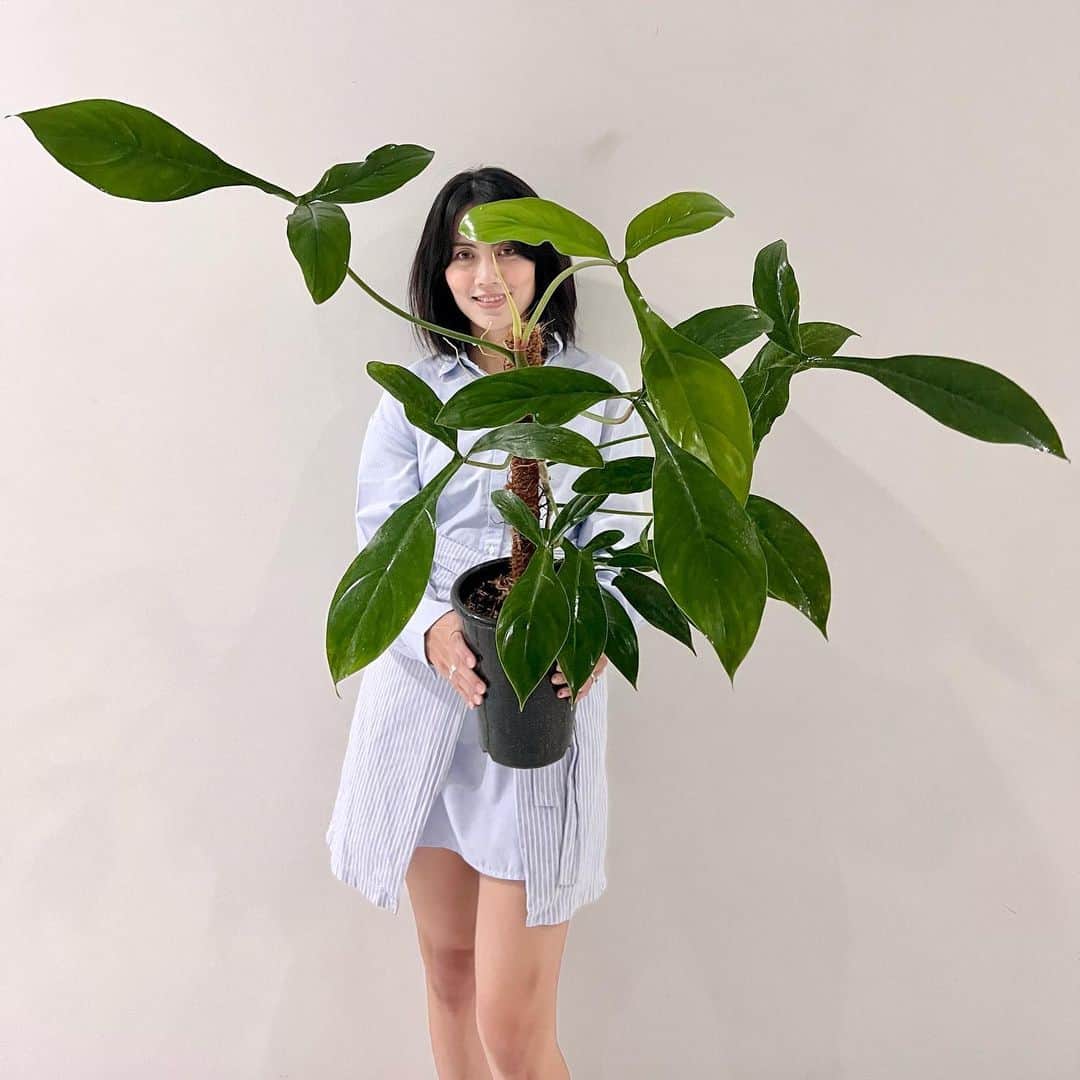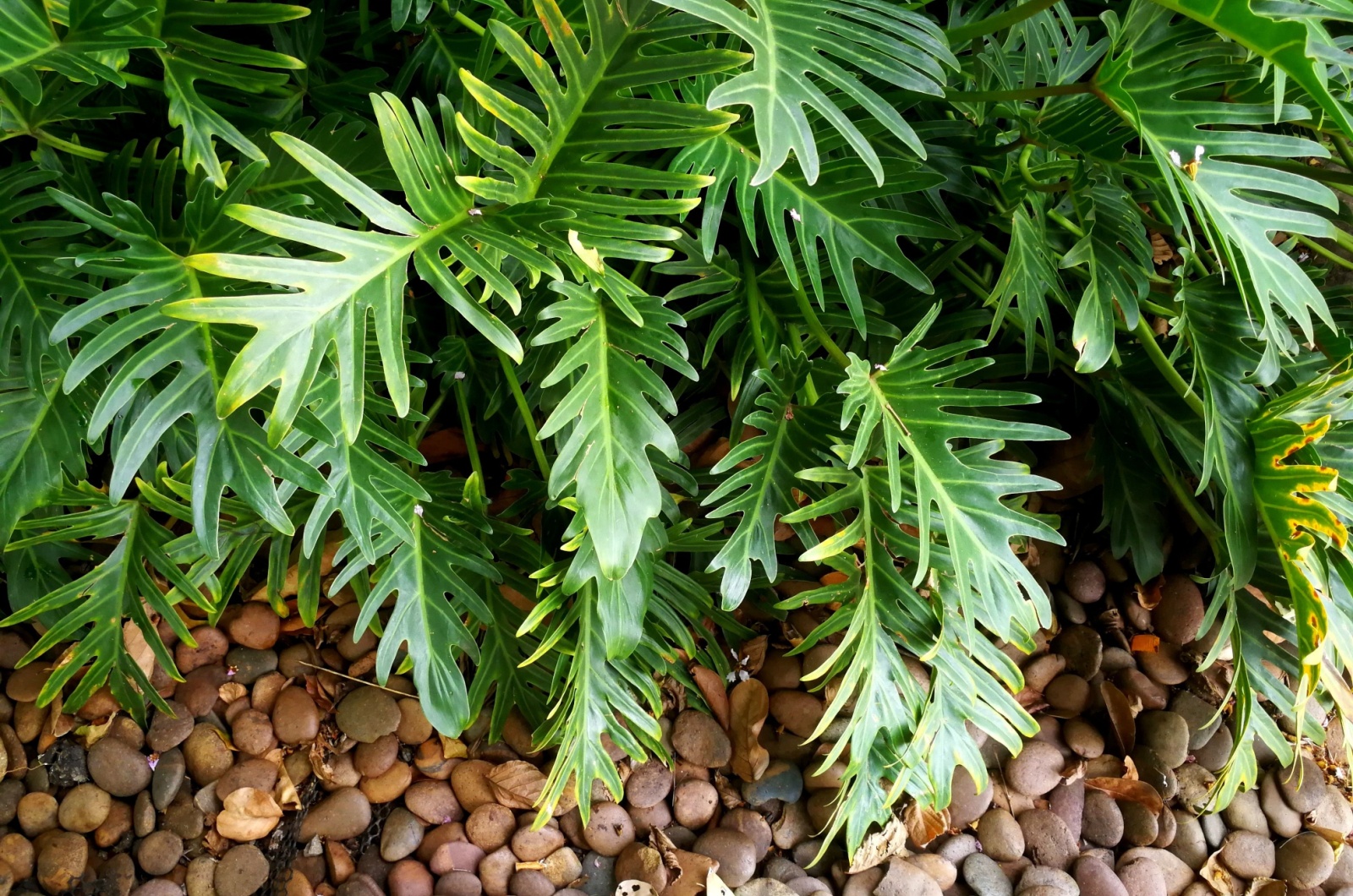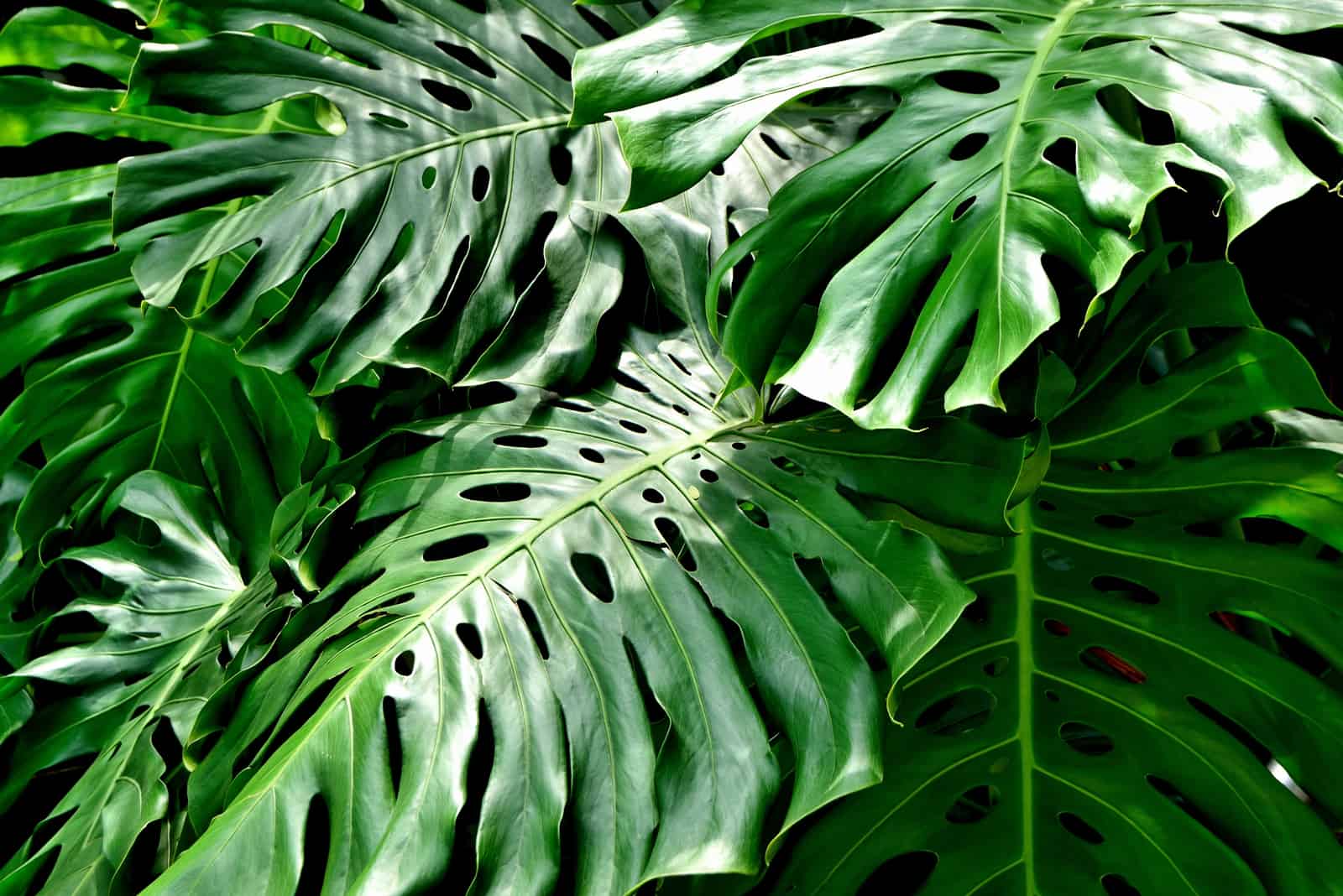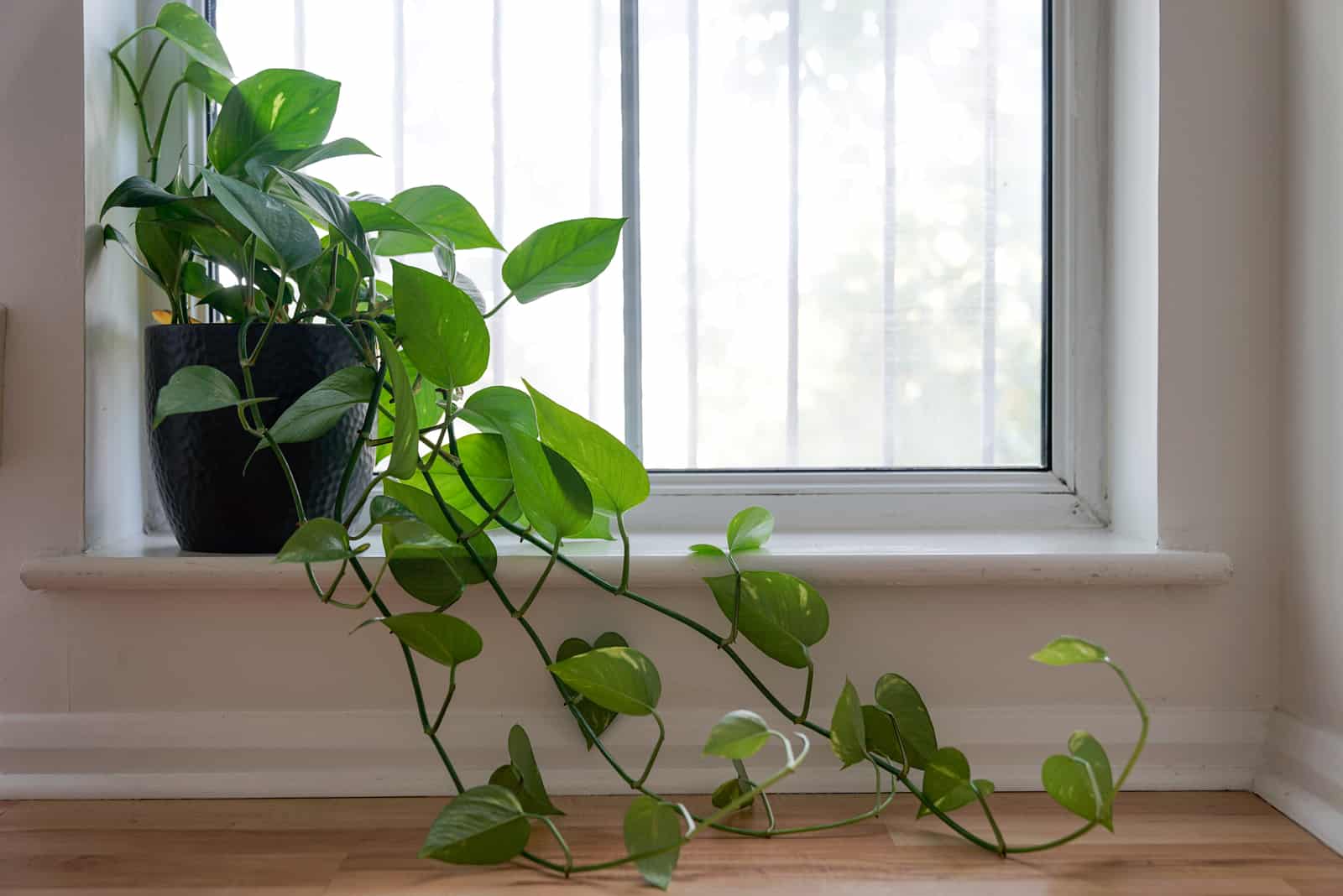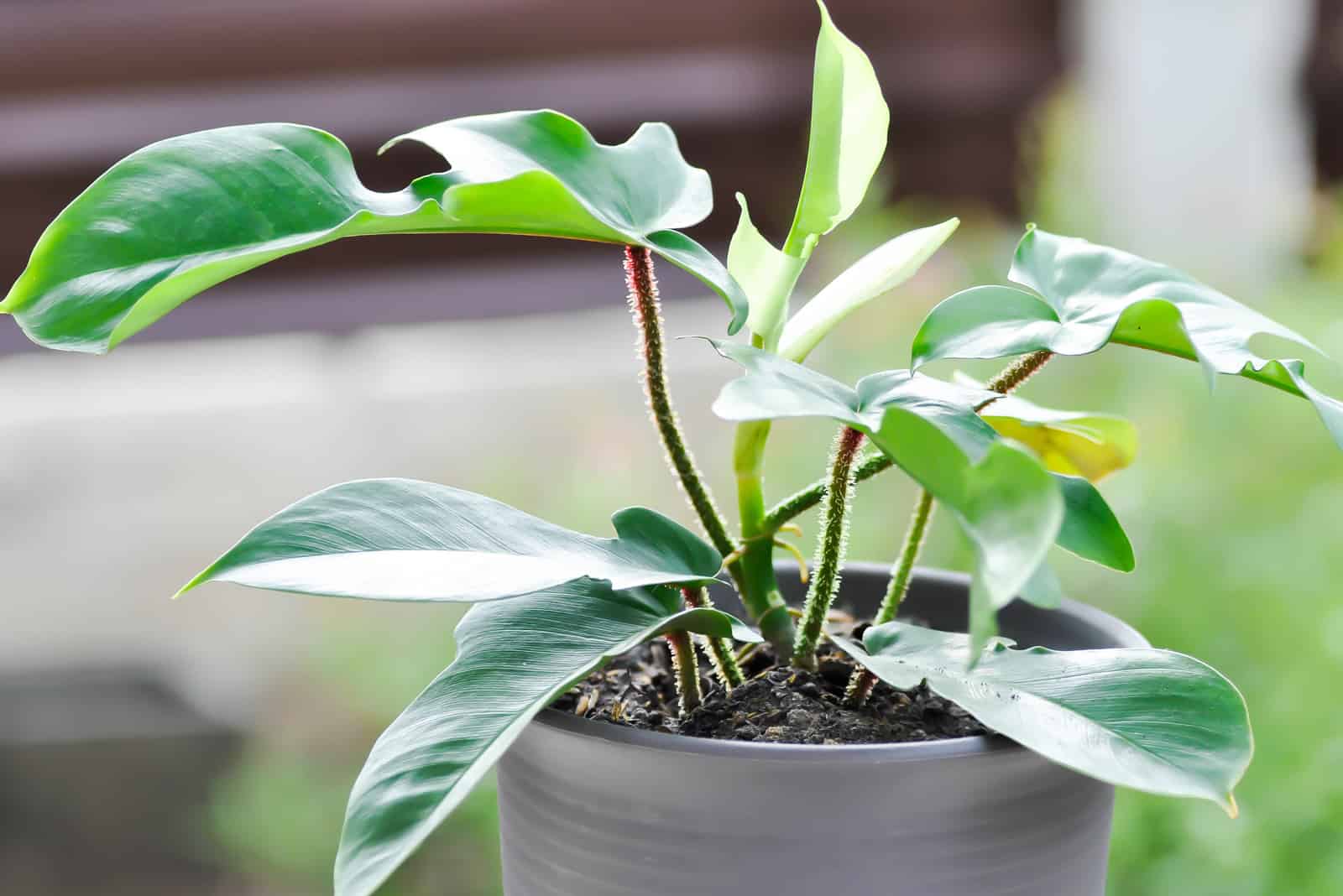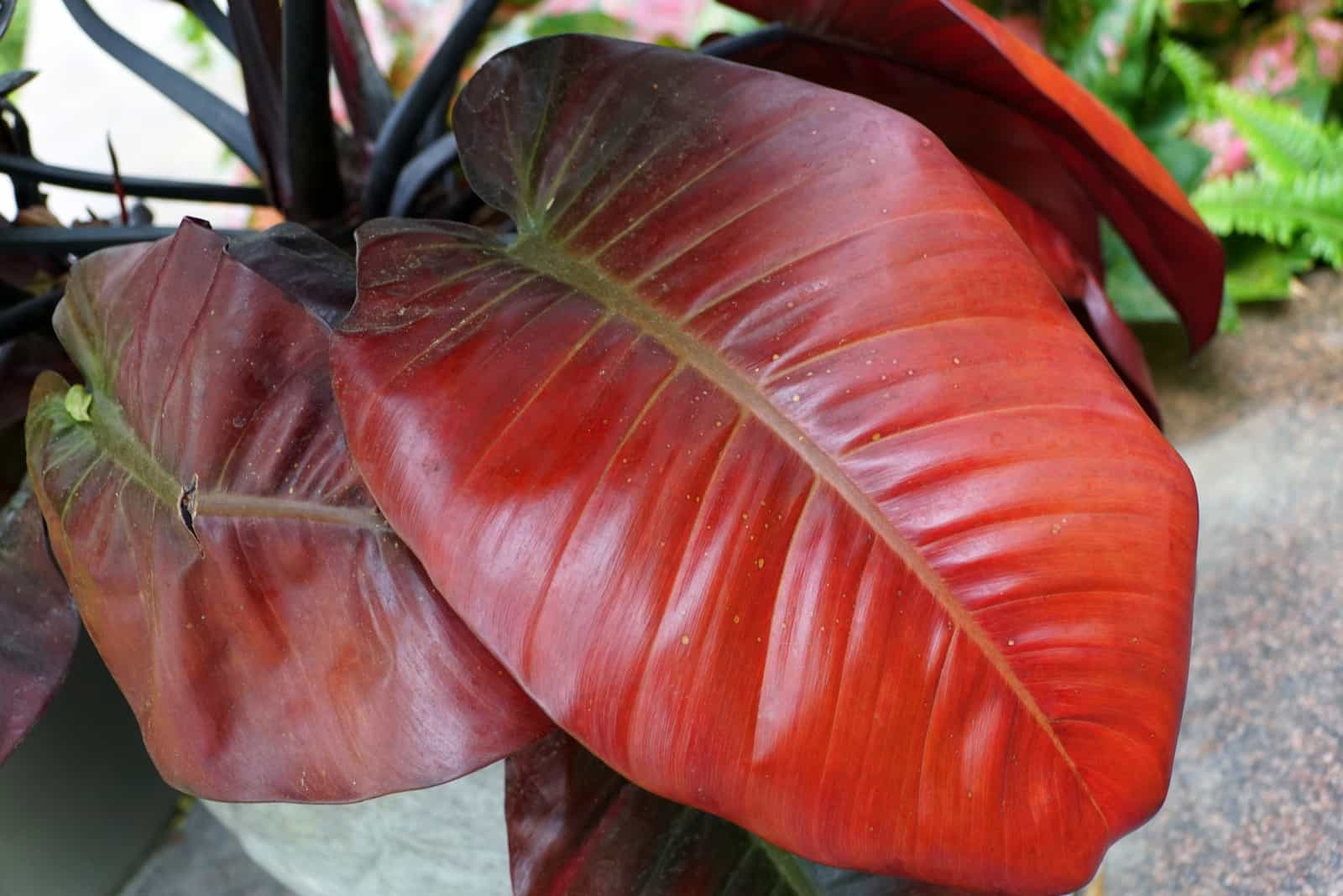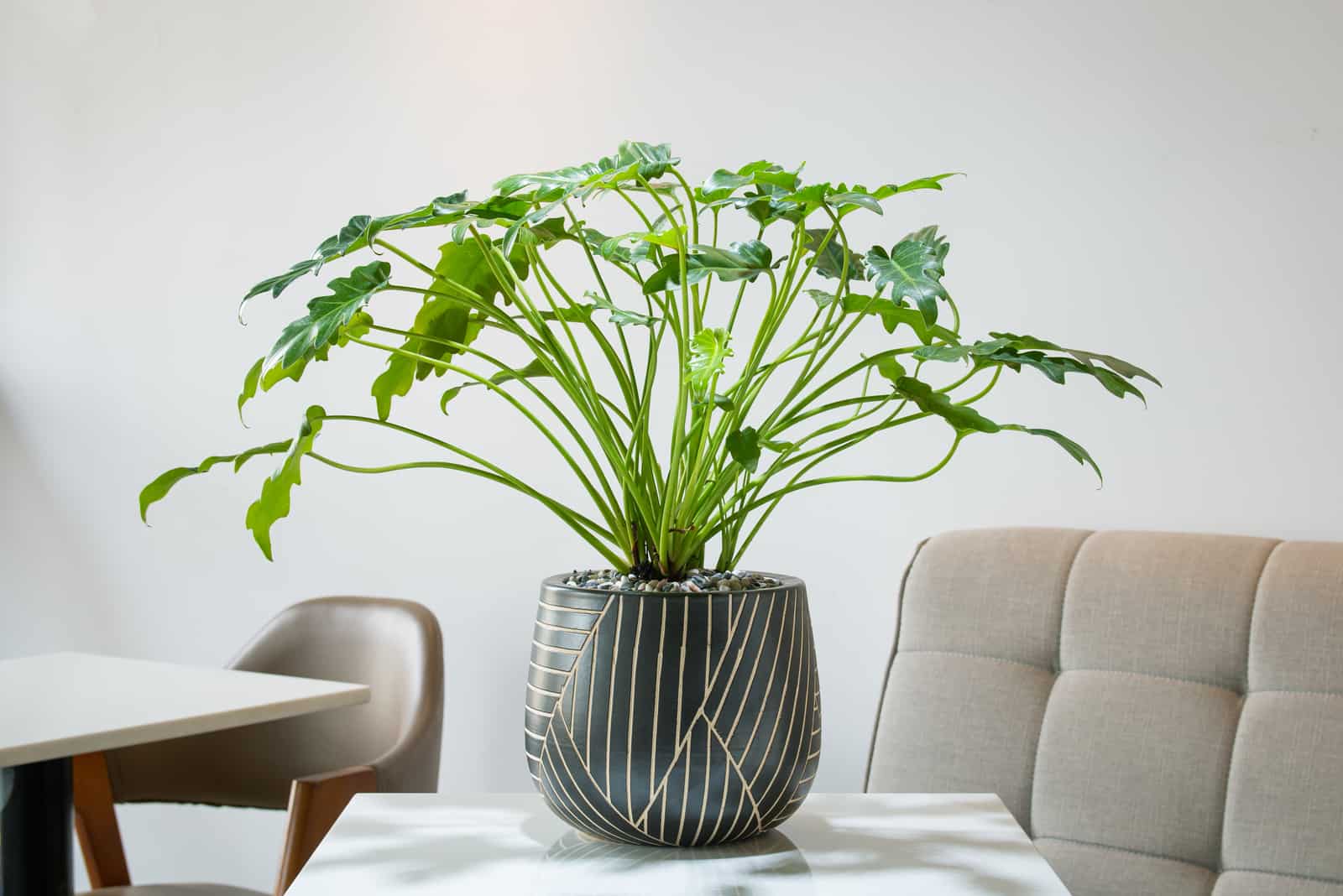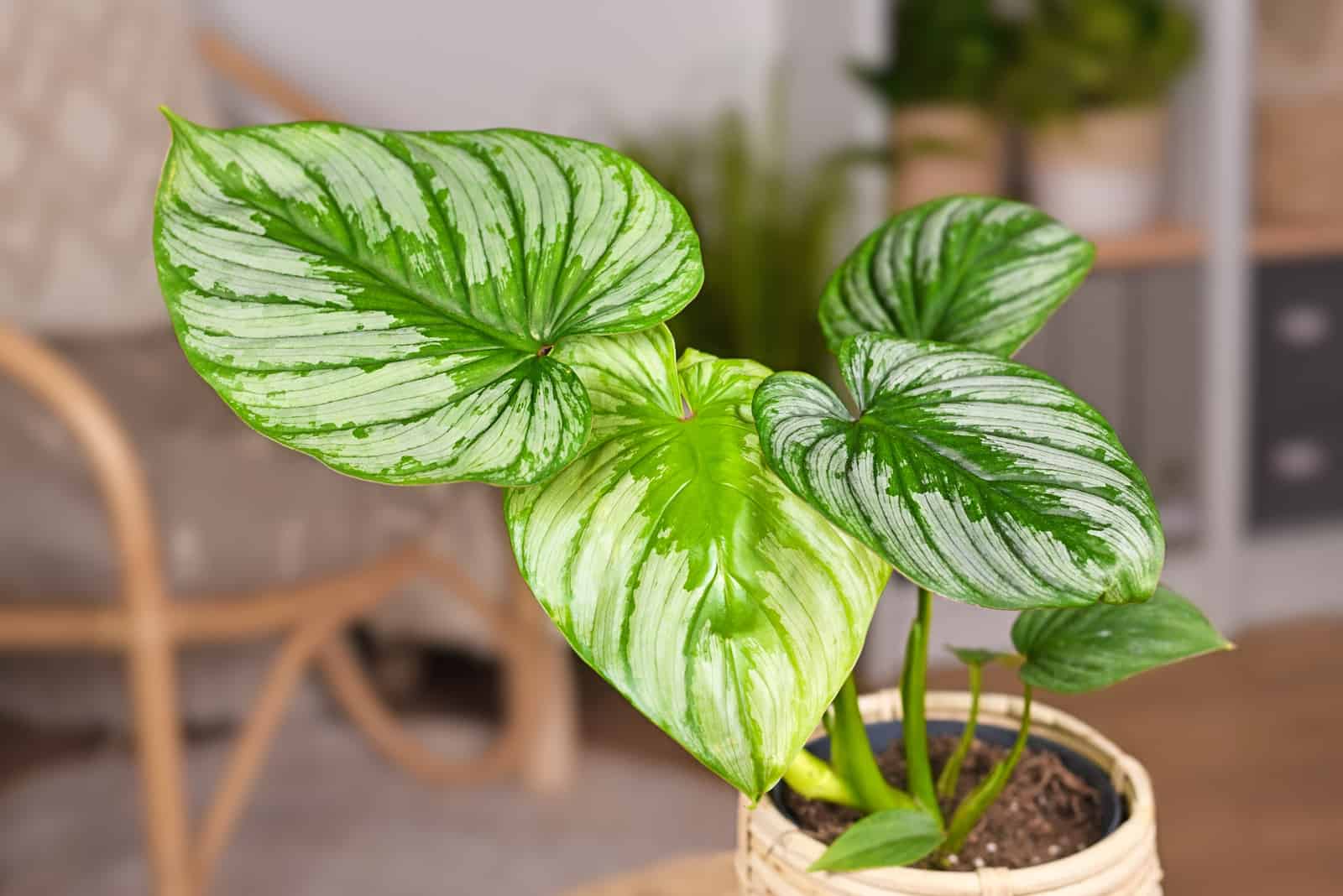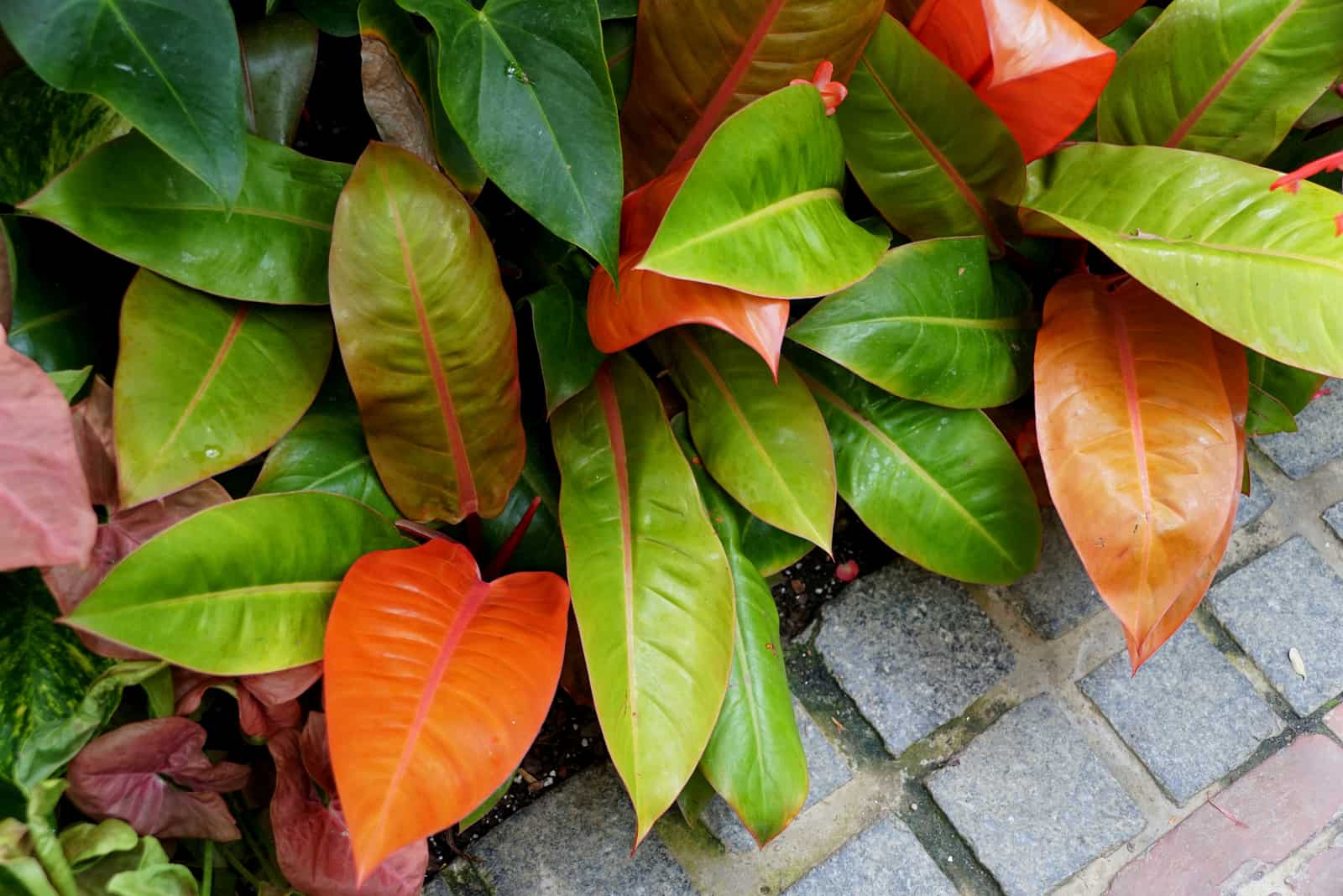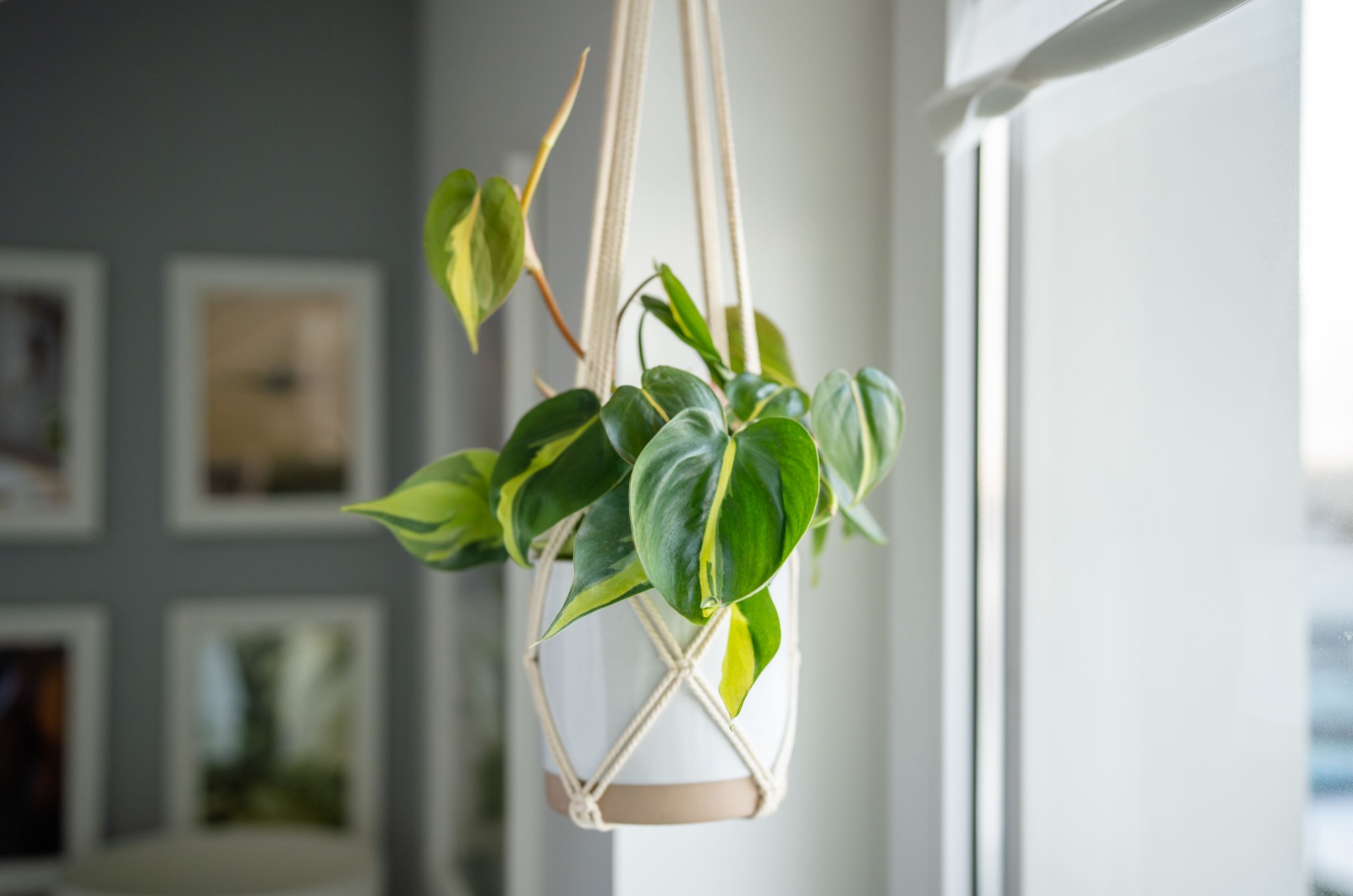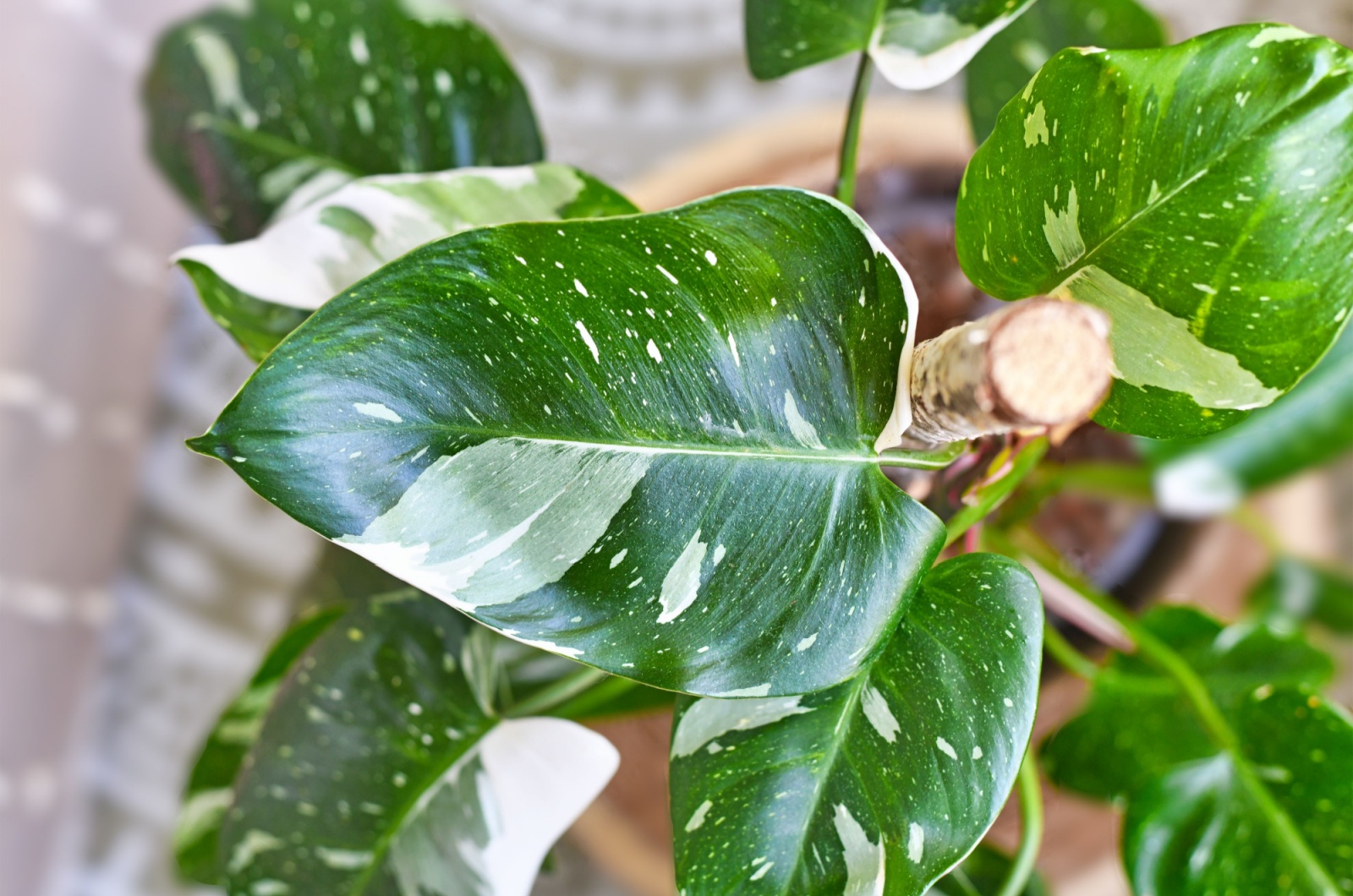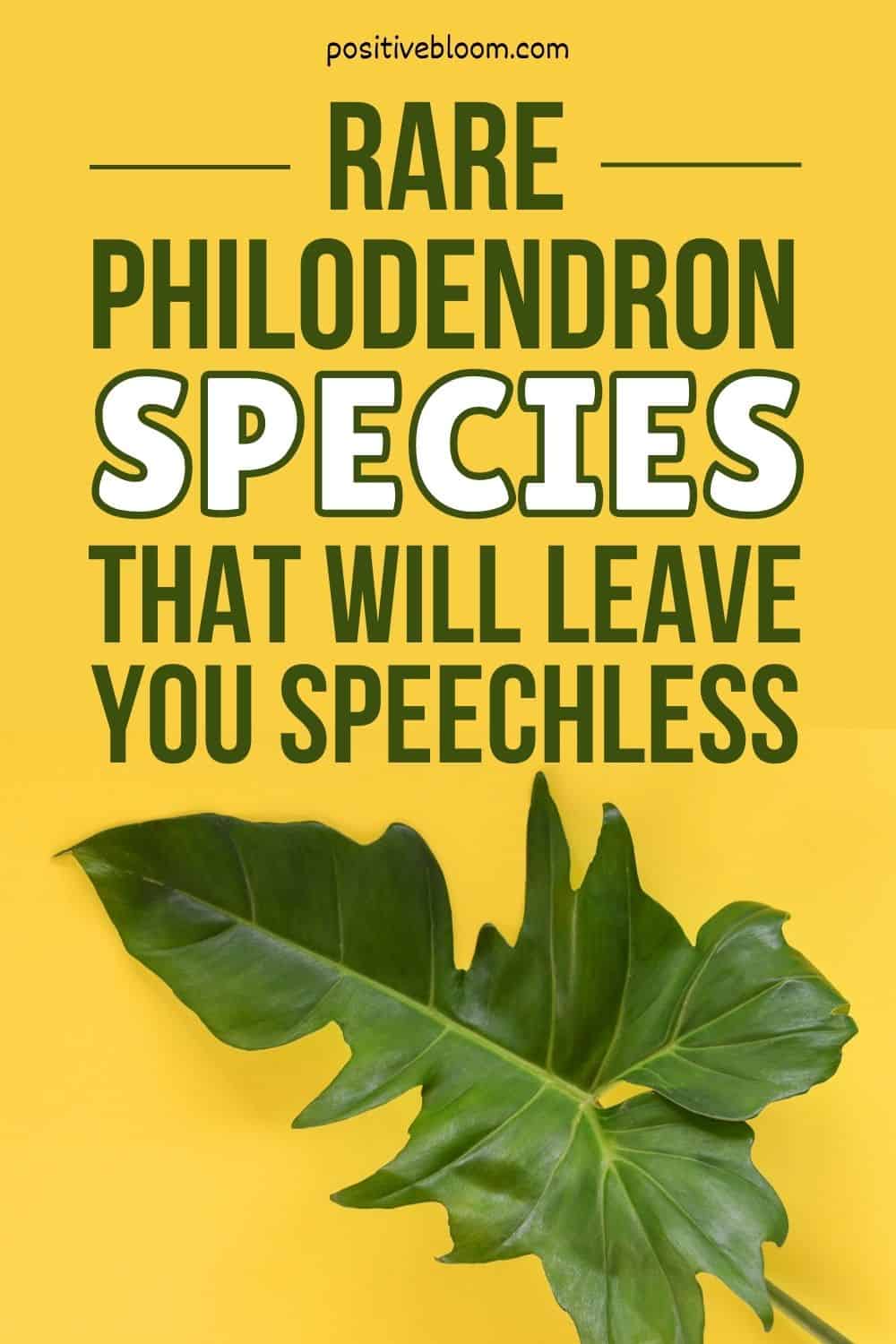Philodendrons are undoubtedly one of the most common houseplants, and you can find them as parts of the most beautiful plant collections.
They are easy to care for, easy to propagate, and easy to find. Easy to find applies to many philodendron varieties, but some varieties of Philodendron plants are almost impossible to find and add to a plant collection.
If you are lucky enough to get one, you should be extremely careful not to damage it as there is a great possibility you won’t ever find it again.
Today, I bring you a list of rare Philodendron species that will leave you breathless.
Let’s find out more about each species!
Rare Philodendron Species
Before we move on, I have to mention what makes a certain type of Philodendron rare. The first thing is the location or natural habitat of the plant.
Philodendrons are tropical plants that grow in rainforests around the globe. Some species only grow in one region or country, which makes them hard to locate and rare.
The second thing is variegation, which is color mutation on leaves. You won’t see a lot of variegated species in nature; can you believe that only one out of every 100,000 phildendrons is variegated?
Another reason some species are rare is scarcity. Similar to location, some species are hard to locate, but there are only a few of them even when do you find them.
One thing is certain; the harder the plant is to find, the more we want it!
Now, the moment you have been waiting for: the rarest Philodendron species!
Philodendron Spiritus Sancti
Philodendron Spiritus Sancti is undoubtedly the rarest Philodendron in the world. The very name suggests that the plant is sacred and holy.
This species is native to, and named after, the Brazilian state of Espirito Santo. That is actually the only place where these Philodendron species grow.
It has been said that only six plants are left.
We don’t know the exact location of the plants, but we do know they’re closely guarded by security and monitored by CCTV.
If ever you find this plant, you will have to pay from $5,000 to $10,000. Honestly, I don’t think that’s much for a plant that might be extinct soon.
The Spiritus Sancti plant produces green leaves that can reach about 2 feet in length. Despite the fact that this plant is expensive, it is quite easy to care for.
The Spiritus Sancti will produce unique white flowers if provided with proper care.
This plant can be grown indoors and outdoors. It requires humidity over 50% and prefers deep watering.
Philodendron Billietiae (Variegated)
Variegated Philodendron Billietiae stands out from this list because what makes it so rare is genetic configuration.
The Unvariegated Billietiae produces green leaves and orange stems. On the other hand, the variegated type produces orange stems and leaves that have yellow patches.
As previously stated, variegation is not usual in the wild. Only one out of every 100,000 plants possesses natural variegation, and plants with this feature are way more expensive.
Variegation comes in various colors, such as white and yellow.
A single leaf of unvariegated Philodendron Billietiae costs about $60, but a variegated species would set you back over $1,000!
However, when we see the bright yellow patches on the leaves we begin to understand why it costs so much. I’m sure all plant growers would be delighted to add this plant to their collection.
Both varieties are quite rare because they are native to Brazil and French Guiana. Both varieties have tough, leathery leaves and a distinctive orange stem.
The variegated Billietiae thrives in bright, medium-light. It needs plenty of space to grow and a lot of water.
Philodendron Birkin
A really special thing about Philodendron Birkin is the fact that it cannot be found in nature. It was developed by a rare mutation in Philodendron Rojo Congo. This type of mutation is called a chimeric mutation.
This means that the Birkin’s tissue is a combination of cells of more genotypes.
The leaves were propagated after they were separated from the mother plant. This is quite unusual for other variegated plants because variegation is not easily transferred.
Tissue cultures are now used to create all-new Birkin plants. Birkins have the power to transform or revert back to being a Rojo Congo. Birkin leaves are normally green with white pinstripes, although they can also be red and cream.
Birkin has a slow growth rate, which makes it an excellent houseplant.
Philodendron White Knight
The White Knight species is known for its fascinating oval dark green leaves with white splashes. In addition, it has stems that come in various colors, like brown, white, and dark shades of magenta.
White Knight plants reach a certain height or size based on the environment and space available to them. In the wild, a mature White Knight Philodendron can grow up to 10 feet long. The plant appears to be healthier and more attractive as the leaves grow closer to the stem.
The leaves of this Philodendron are normally heart-shaped. When fully mature, the leaves become significantly longer than usual and can reach a length of around two inches.
Interestingly, the leaves change as they grow older and when exposed to more sunshine. At first they are light green, but turn dark green as they mature.
The White Knight is commonly mistaken for the White Wizard, but these plants differ in shape and size of leaves, as well as growth rate and color of the petioles.
Philodendron Hastatum aka Silver Sword
The Silver Sword is a fascinating species! It’s technically green, but what makes it really stand out is the leaves, which shine like silver!
The term Hastatum comes from the Latin word hastatum, which means sword-shaped. It deserves such a powerful name, with its narrow, sharp leaves shining a beautiful silver color.
This species originates from tropical Brazilian forests, and prefers low light and moist soil.
Although the Silver Sword Philodendron is more available in nurseries than it used to be, it is considered an endangered species.
There are not many Hastatum plants left in the wild, with the majority of them now grown as houseplants.
The Silver Sword plant is a climber, and when provided with support the plant’s leaves grow sharper and sharper. If we think of how a sword is forged, the name of the plant fits perfectly.
Hastatum can grow quite tall when it has something to climb on, and it thrives in moderate temperatures and a well-draining potting mix.
As mentioned, this plant grows well in low light, so don’t expose it to direct sunlight because it can cause the leaves to turn black.
Philodendron Melanochrysum
The Philodendron Melanochrysum is commonly known as the Black Gold Philodendron.
The Black Gold has a climbing habit and is well-known for its massive foliage. The Melanochrysum has long, heart-shaped leaves that are dark greenish and can have gold speckles with light green to white veining.
This species is on the wishlist of many passionate houseplant growers. However, it is really hard to find one so I highly recommend you purchase it if you ever do.
When new leaves emerge they are somewhat orange, but as they mature they turn to dark green.
Melanochrysum is derived from the Greek words melano, which translates to black, and chrysum, which means gold.
Eduoard Andre, a prominent European landscape designer and horticulturist, discovered the Melanochrysum about 130 years ago.
This plant prefers bright indirect light and is susceptible to overwatering, so make sure the soil is dry at least two inches down before you water it.
Some great news is that Melanochrysum is easily propagated, so if you get one you can use either the stem cutting or air layering propagation methods to make a perfect gift for your plant-loving friends.
Philodendron Brandtianum
Philodendron Brandtianum, or the Silver-Leaf Philodendron, has lovely olive green foliage with silvery streaks.
They have a bushier growth habit than other philodendrons. Even though the Philodendron Brandtianum makes an excellent hanging plant, it can also be trained to climb up a moss pole, trellis, or other support. A fascinating characteristic about this plant is that it can grow as a hemiepiphyte, epiphyte, and even a terrestrial plant.
However, the growth rate and color of the leaves will vary widely depending on soil type, sunlight, and temperature.
This is an aroid plant and is native to Peru, Bolivia, Brazil, Ecuador, and parts of Colombia.
Silver leaf philodendrons also assist in the removal of contaminants from indoor air.
Philodendron Warscewiczii
The Warscewiczii is native to Central America and was discovered in the wild growing over rocks in tropical jungles.
The leaves of this plant develop as slender, blade-like stems with feathery leaves on top. If you happen to come across a Philodendron Warszewiczii in bloom, the blossoms are a gorgeous white!
The Philodendron Warszewiczii has been a popular tropical plant since its discovery in 1855, yet it is still difficult to find.
You’ll adore this uncommon Philodendron for its snowflake-shaped leaves, low maintenance requirements, and rarity among Philodendrons.
Philodendron Florida Ghost
Philodendron Florida Ghost is a rare Philodendron species named after the leaves’ growth habit. Before maturing to a natural green, new leaves are ghostly white.
This plant is so rare and valuable that it was recently sold for $12,250 at an online auction.
The Florida Ghost plant is a hybrid of two plants that belong to the family of the Araceae: Philodendrons Pedatum and Squamiferum. That’s the reason the Florida Ghost is mistaken for Philodendron Pedatum.
It takes more light to reveal the diversity of Florida Ghost than other Philodendrons.
There are times when it’s sold as a separate type called Florida Mint Ghost, but don’t be fooled by the name — it’s just a regular Ghost grown in less light!
Philodendron Erubescens (Philodendron Pink Princess)
The Philodendron Pink Princess got its name because of its gorgeous blush-colored leaves. Its appearance has made this plant one of the most popular Philodendrons in recent years.
The scientific name for this beautiful Philodendron is Philodendron Erubescens, which means ‘blushing’ in Latin. It gets its name from the color of its leaves, which are pink and a warm chocolate brown. A Pink Princesses’ stems are a deep dark red.
The Pink Princess is a climber, and when provided with good support it can grow up to 5 feet tall. The leaves grow up to 9 inches long.
Many growers want this Philodendron for their collections, which is why it has become quite rare. The Pink Princesses are sold in small quantities to the rest of the globe, despite their abundance in Columbia.
There are many buyers but not enough supply, so this plant always sells out very quickly.
If you’re lucky enough to get your hands on this wonderful plant, you’ll find that it’s really easy to care for. Keep your Pink Princess Philodendron in bright indirect light and give it at least 3 hours of natural light a day before letting it rest in the dark.
A special thing about the Pink Princess is that it grows upwards in the wild before becoming a vining plant if provided with the right conditions.
Philodendron Gloriosum
Another rare species is Gloriosum, which originally grew in rainforests.
The plant wasn’t discovered until the late 1800s and it requires about 15 years to mature. The Gloriosum doesn’t flower until it is fully mature and is quite sensitive to changes in the environment. These characteristics can make the Gloriosum plant difficult to grow.
For example, there’s no way to save your Gloriosum if you accidentally overwater it. However, you can take a cutting and start a new plant from it.
A stem cutting can take more than three weeks to grow roots, making it one of the slowest flowering plants to propagate.
The Gloriosum may only flower once a year after it matures, usually in June. As a result, getting seeds is difficult and takes a lot of time, patience, and forethought.
A Gloriosum plant is expensive, and the tiniest seedlings usually cost around $100. Depending on the roots’ size and leaves, larger plants can cost $250 or more.
Philodendron Grazielae
The Grazielae is another difficult-to-find Philodendron species. Your best chance is to look for them on the internet to see if anyone is selling them and hope they aren’t sold out.
These plants are low-maintenance and enjoy climbing, like many Philodendrons. It climbs up trees in its natural habitat.
The vine has robust stems and little glossy heart-shaped leaves. This Philodendron can be grown in containers but needs to be pruned regularly to keep it bushy.
You can also put it in a hanging basket to brighten up your world with its gleaming green foliage.
Philodendron Moonlight
The Philodendron Moonlight is another fascinating variety to add to your collection (if you can find any), with its beautiful lime-green leaves.
This plant produces reddish-orange spikes that eventually turn into flowers. This species prefers warmer climates.
Although it reaches medium size when grown as a houseplant, it can be a climber. Because of its growth habit, it grows wide rather than tall.
Moist soil, bright indirect light, and high humidity will encourage the Moonlight plant to grow healthy and thrive.
Philodendron 69686
The last on our list of rare plants from the genus Philodendron is the Philodendron 69686. I know what you’re probably thinking – what kind of name is that?!
If you are looking for some symbolism of the number, I have to disappoint you; 69686 is actually the identification number. The researcher who discovered the plant couldn’t think of another name, and the identification number is still used today.
But this Philodendron is much more than a number; it has bunny-like ears on the lobes and slender, upright green leaves.
This species grows in shaded areas of French Guiana.
Therefore, if you want to grow it indoors you must ensure higher humidity, water it occasionally, and keep it moist.
Not-So-Rare (Now) Varieties Of Philodendron
There are some species that were once rare, but are fortunately now available in local plant stores and online.
Let’s take a look at a list of the most common Philodendron indoor plants that were once considered rare.
Split-Leaf Philodendron
The Split-Leaf Philodendron is often mistaken for a Monstera Deliciosa, which is often called Philodendron Monstera.
This species has glossy green leaves and reaches a height of 10 feet (3 meters) tall and a width of 15 feet (4.5 meters) wide.
Its highly divided leaves can grow to three feet long. It can produce purple and cream spathes, otherwise known as flower spikes, up to a foot in length.
A Split-Leaf is a low-maintenance plant that produces gorgeous and large leaves with splits along the edges.
Heartleaf Philodendron (Philodendron Hederaceum)
The Philodendron Hederaceum, Scandens, Philodendron Micans, or Heartleaf all refer to the same plant.
The most common name we use is Sweetheart, and that nickname fits perfectly. This Philodendron species is sometimes confused with Pothos plants.
A Sweetheart Philodendron will forgive you if you forget to water or repot it.
Long stems, bushy foliage, and heart-shaped green leaves distinguish a Heartleaf Philodendron from other species from the same genus.
These plants are adapted to humidity, indirect sunshine, and warm temperatures. Their natural habitat is islands close to Brazil and the West Indies.
The growing season for the Sweetheart lasts from spring through summer. However, you can start new growth indoors at any time of year.
Although studies disagree on how harmful these philodendrons are when eaten, it is best to keep them away from pets and children.
Another interesting thing about the Heartleaf is that it has a variegated brother called Philodendron Brasil.
Philodendron Pedatum
A Mature Philodendron Pedatum is a remarkable multi-lobed species that has gained various scientific names due to the variety of leaf shapes it naturally grows. It was first described in 1841.
Many databases still refer to the Philodendron Pedatum’s basionym (real scientific name) as Caladium Pedatum. Botanist Joseph Dalton Hooker believed that this species was actually from the Caladium genus.
The Pedatum can be found in Bolivia, Ecuador, Colombia, French Guiana, and Brazil.
Some leaf shapes of the Pedatum species are very similar to those of Monstera. In other words, they have split leaves.
Philodendron Black Cardinal
What sets the Black Cardinal apart from other heart-leaf species is its ability to change colors. As the plant matures, you can see three colors: burgundy, green, and black.
The possibility of seeing Black Cardinal flowers is really low, but in my opinion the leaves compensate for this.
This is a medium-sized plant, and you can let it crawl on the ground, grow it in hanging baskets, or grow it in a regular pot.
The Black Cardinal grows up to 3 feet tall, but if you want to keep it smaller you can prune it.
Philodendron Xanadu
The Philodendron Xanadu, or Philodendron Winterbourn, grows well inside and won’t reach a height of more than 3 feet. The green foliage has an interesting ‘feathered’ appearance and it gives a touch of elegance to any surroundings.
When it comes to Xanadu plant care, it is relatively simple. It thrives in medium to bright indirect light, which makes it an excellent houseplant.
The Xanadu is Monstera Deliciosa’s cousin and native to South America.
It was previously known as Winterbourn, but was renamed in 1998 by Houseplants of Australia. Xanadu is often mistaken for Philodendron selloum.
A variety of Xanadu called Golden Philodendron Xanadu is perfect for you if you prefer brighter colors. This variety has dazzling yellowish-green foliage.
Philodendron Mamei
The Mamei is a unique vining specimen that has gorgeous shiny foliage.
This unusual Philodendron species was discovered deep in the Ecuadorian jungles in 1883. It grows tall very quickly thanks to its wide silvery leaves. This leafy green Philodendron adores climbing.
Along with its leaves, the Mamei is recognized for its ruffled stem. With proper care it can grow to a height of 2 meters or more. This lovely plant has leaves that can grow to about 10-18 inches long. The Mamei also produces red flowers.
This plant hates direct sunlight, and if exposed to it even just a little the leaves could lose their beautiful deep green color.
Additionally, this species is very sensitive to overwatering, so try to reduce watering and adjust it to the plant leaves.
You can grow a Mamei both indoors and outdoors as long as you ensure the temperature ranges from 60 to 75 degrees Fahrenheit.
This once-difficult-to-find Philodendron can now be found in any local nursery.
Philodendron Prince Of Orange
The Philodendron Prince of Orange got its name because of its distinctive colored leaves that change color over time. When new growth first appears it is yellow, then transitions to reddish-brown tones before the leaves turn darker shades of green.
The Prince of Orange is a hybrid and produces its unique leaves from the central part of the plant. This is an amazing feature as other Philodendron species produce leaves from stems or vines.
The Prince of Orange resembles a Philodendron Congo due to its growth habit and appearance. However, the Prince grows up to 2 feet.
If you decide to grow this species you will need to ensure it has a bright spot that doesn’t receive direct sunlight.
New leaves develop from the plant’s center that are yellow in color before turning green. Older leaves on the outside of the plant also turn yellow. Before trimming, be careful to distinguish between typical leaf color changes and coloring that suggests poor health.
FAQs
What is the most beautiful Philodendron?
All Philodendrons are beautiful, but some do stand out. One of the most beautiful species from the Philodendron genus is the Philodendron Plowmanii. It has large leaves that come in various shades of green, and the leaves have silver markings when juvenile. The undersides of the leaves become grayish as the plant matures.
If you prefer more colorful plants, the Philodendron Prince of Orange is one of the most beautiful. When new growth first appears it is yellow, before transitioning to reddish-brown tones and darker shades of green.
How many species of philodendrons are there?
There are about 450 Philodendron species. They can be climbers and vining plants. You can find them in various colors and sizes and they are easy to grow.
All these features have made Philodendrons the most common houseplants.
What is the name of the Philodendron with green and white leaves?
The Philodendron White Knight has green and white leaves. The White Knight species is known for its fascinating, oval-shaped, and dark green leaves with white splashes. In addition, it has stems that come in various colors like brown, white, and dark shades of magenta.
Is it possible to grow philodendrons from cuttings?
Yes, it is possible to grow Philodendrons from cuttings. The stem cutting propagation method has the highest success rate and is not complicated. All you have to do is take the cuttings, place them in water, and transfer them into the soil when new roots sprout.
Wrapping Up
The word Philodendron is derived from the Greek words Philo, which means love, and Dendron, which means tree.
These species make excellent houseplants because they are stunning, easy to care for, and can be easily propagated.
However, there are two drawbacks when it comes to these species: the first is that the plants are toxic, but if handled with care there is no need to worry.
The other drawback is that some breathtaking Philodendron species are not readily available. Now that you know some rare Philodendron species, I’m sure you will want one of these plants even more!
If you ever come by any of the species from the article, don’t let them go as they are a real treasure.
Until next time!
Like this post? Share or pin it for later!

